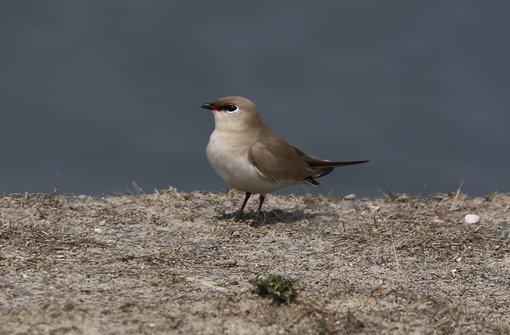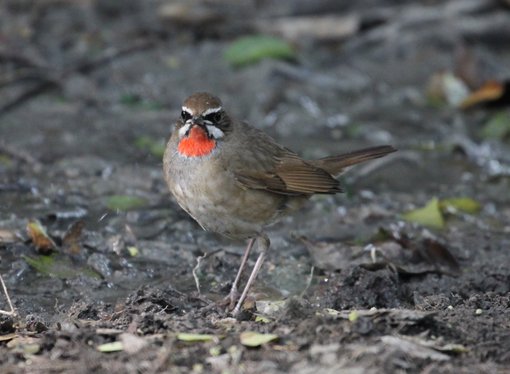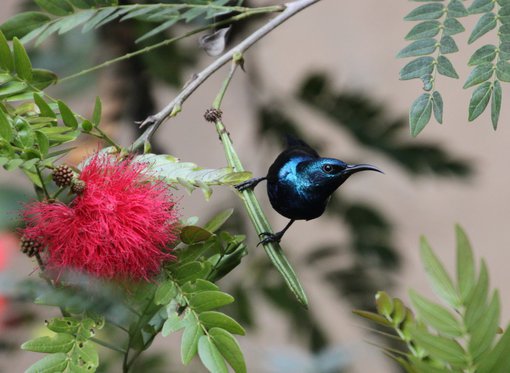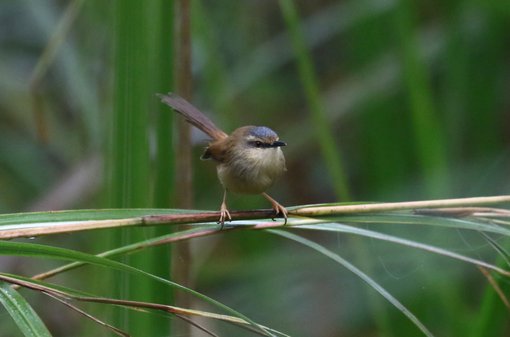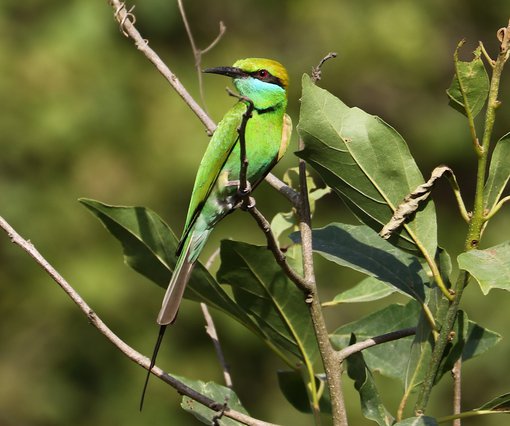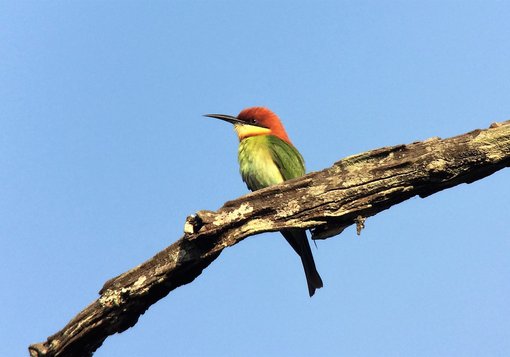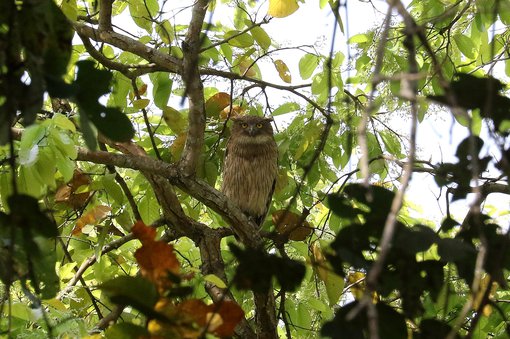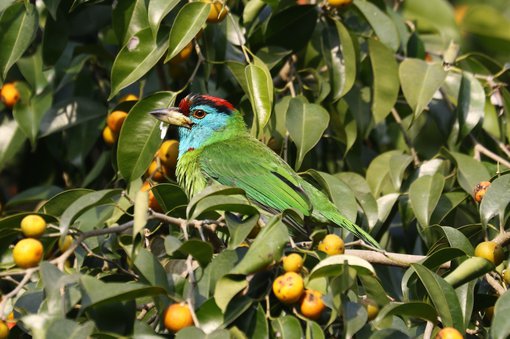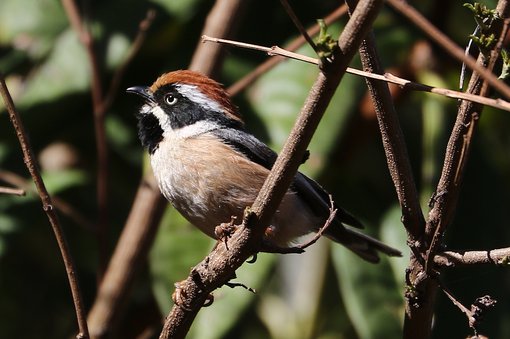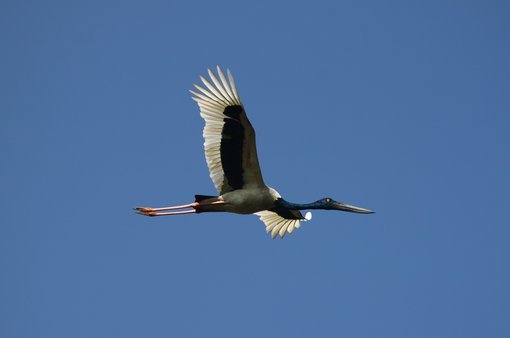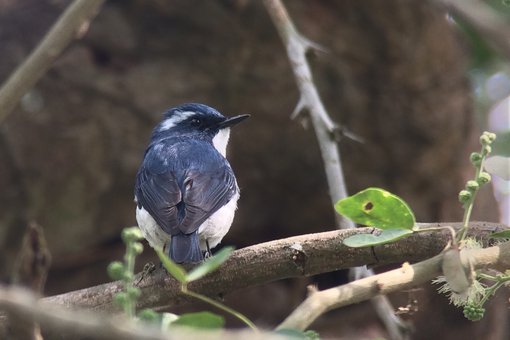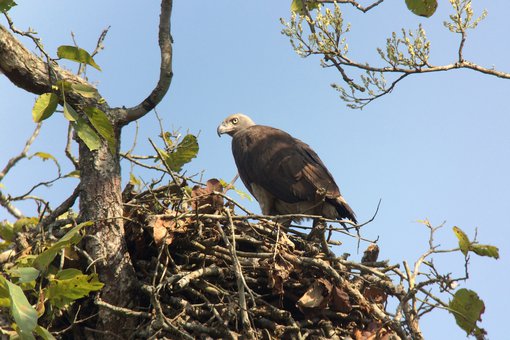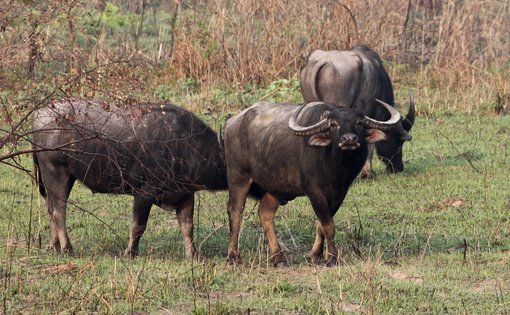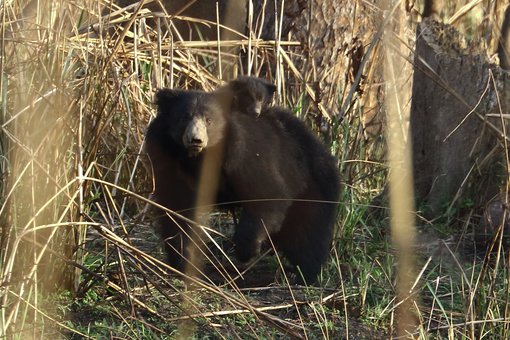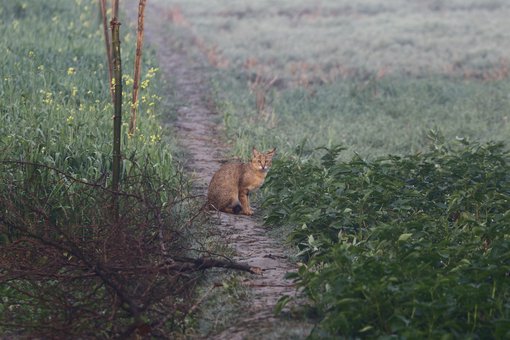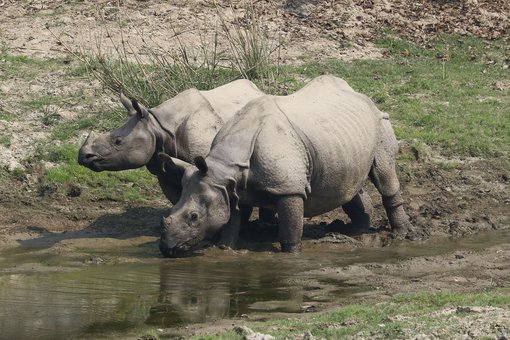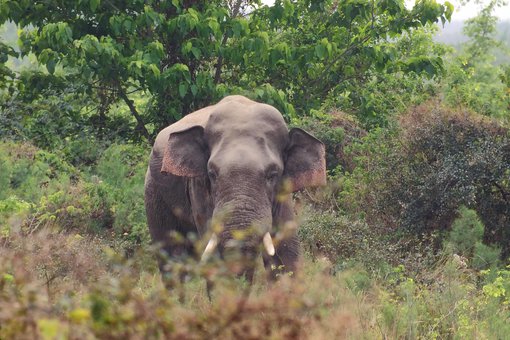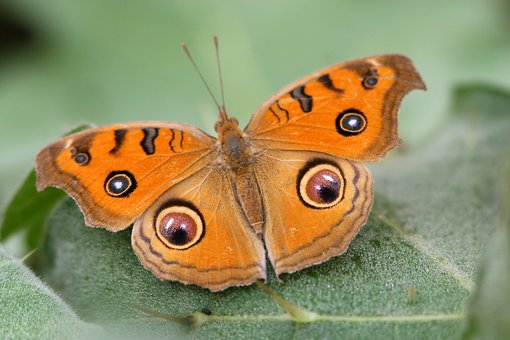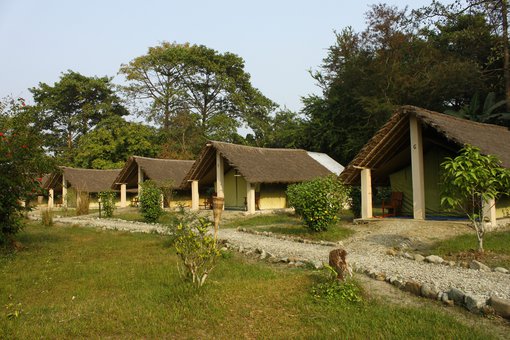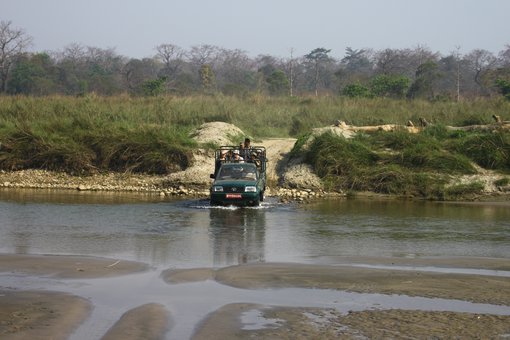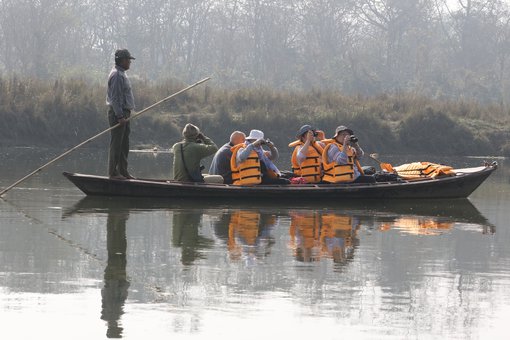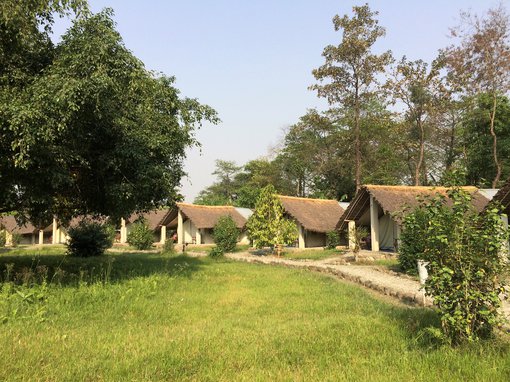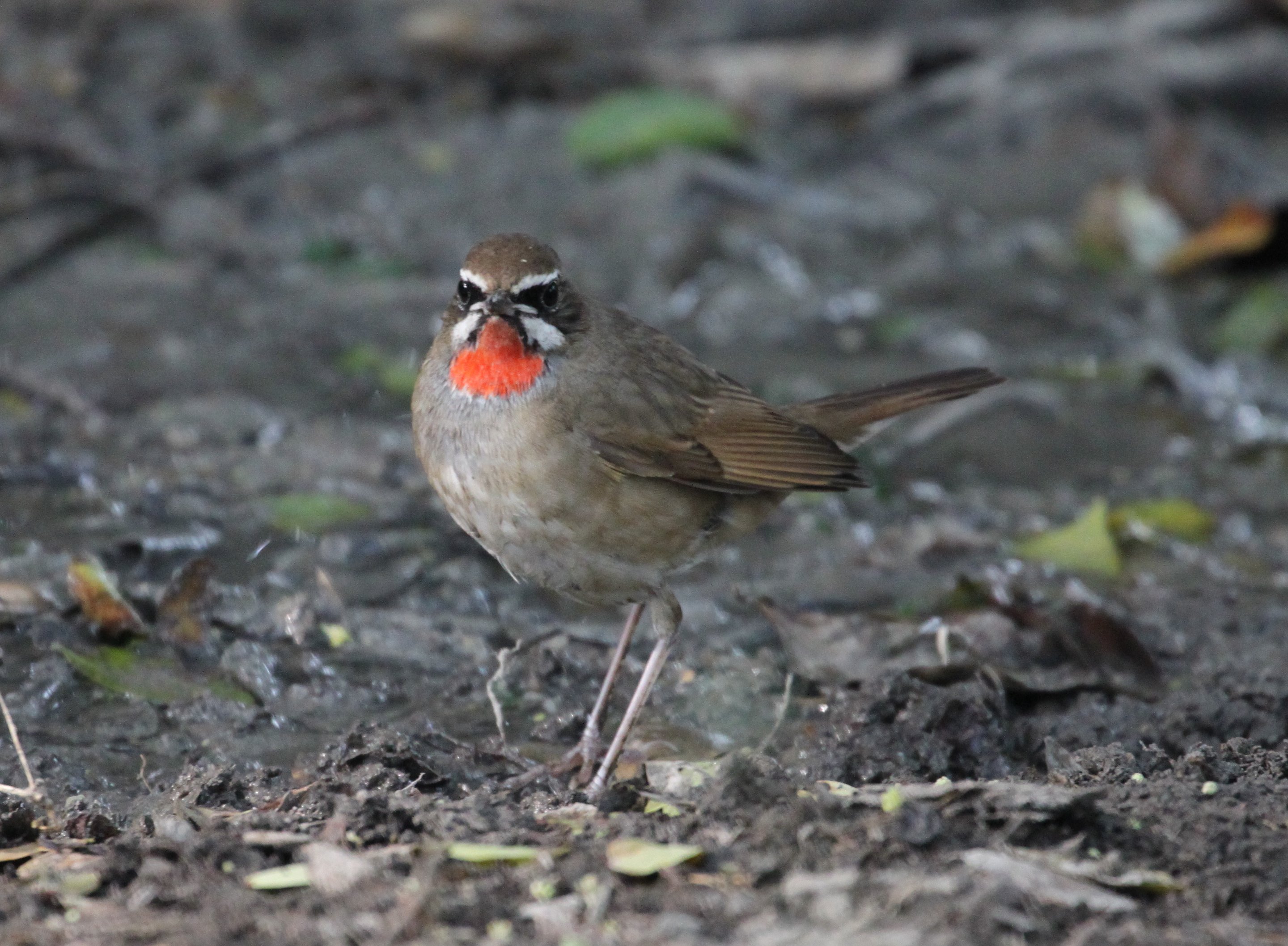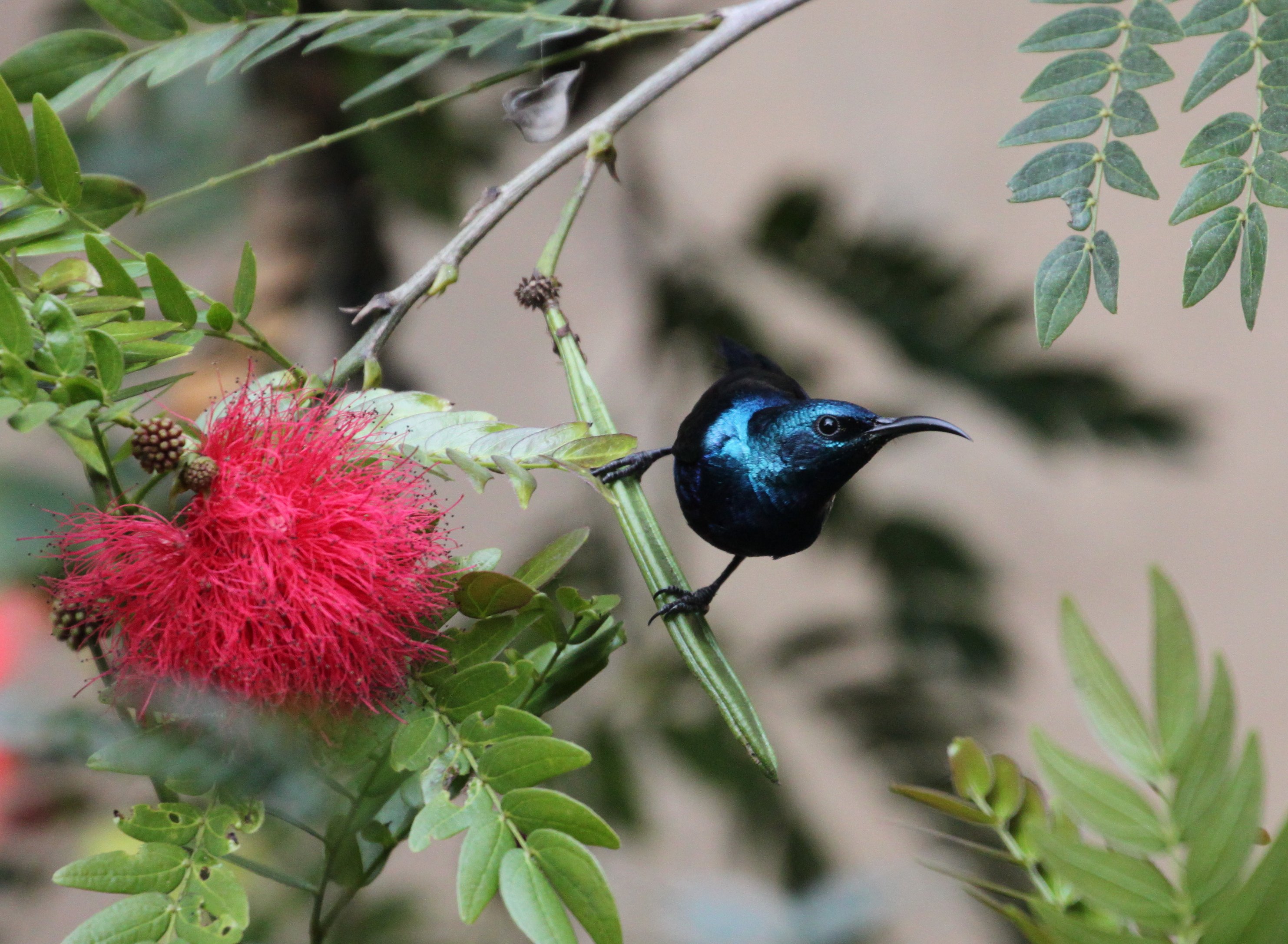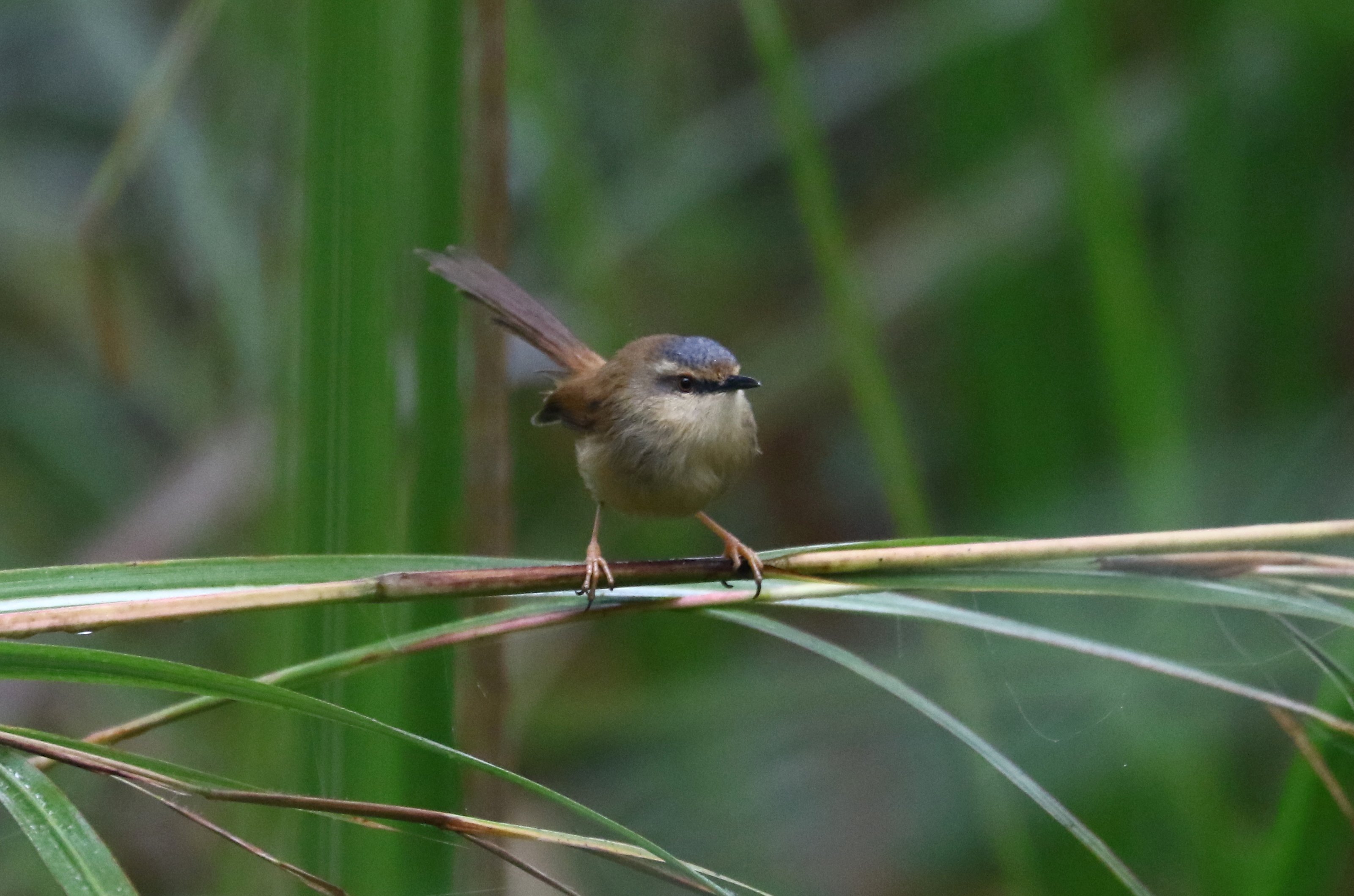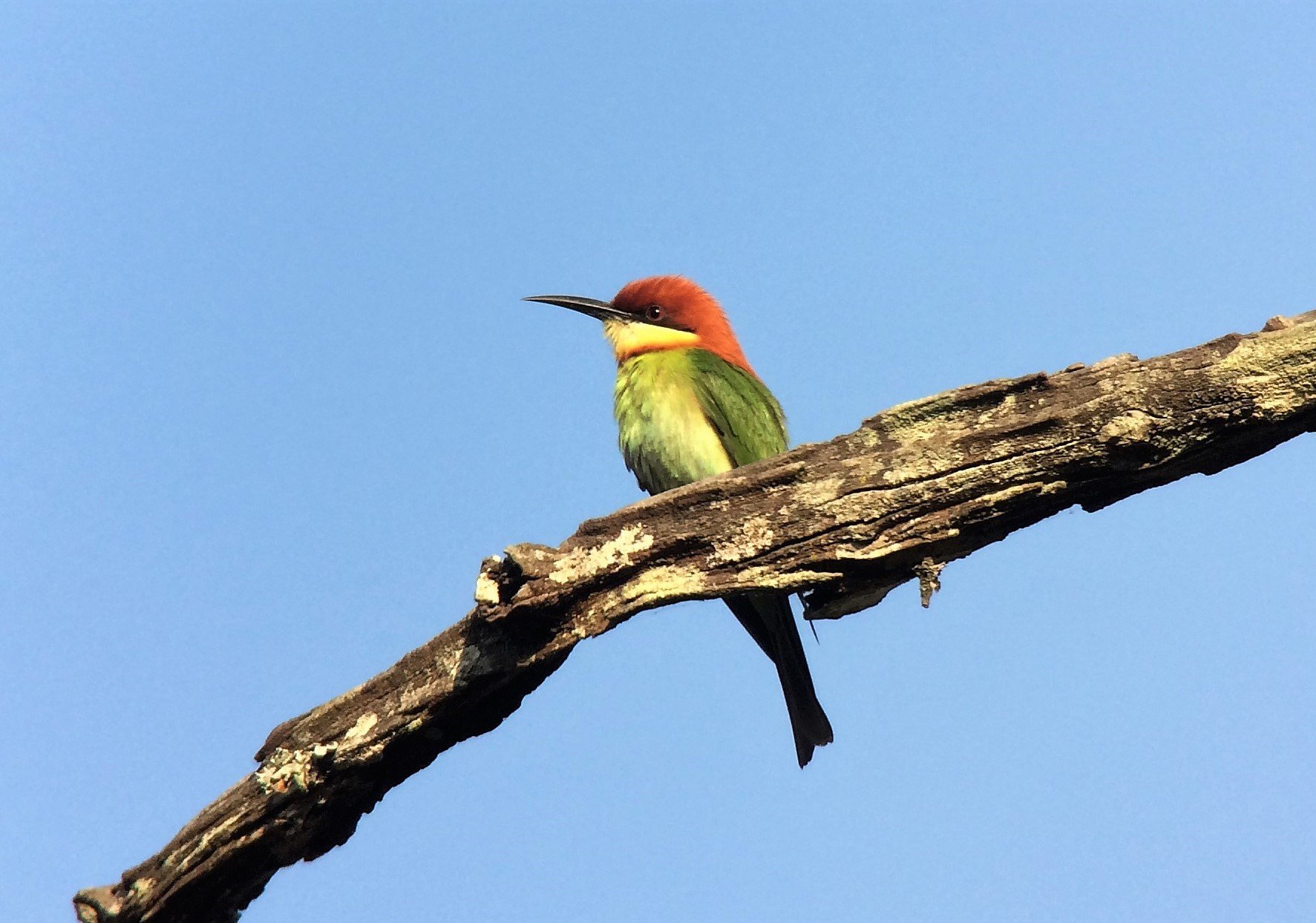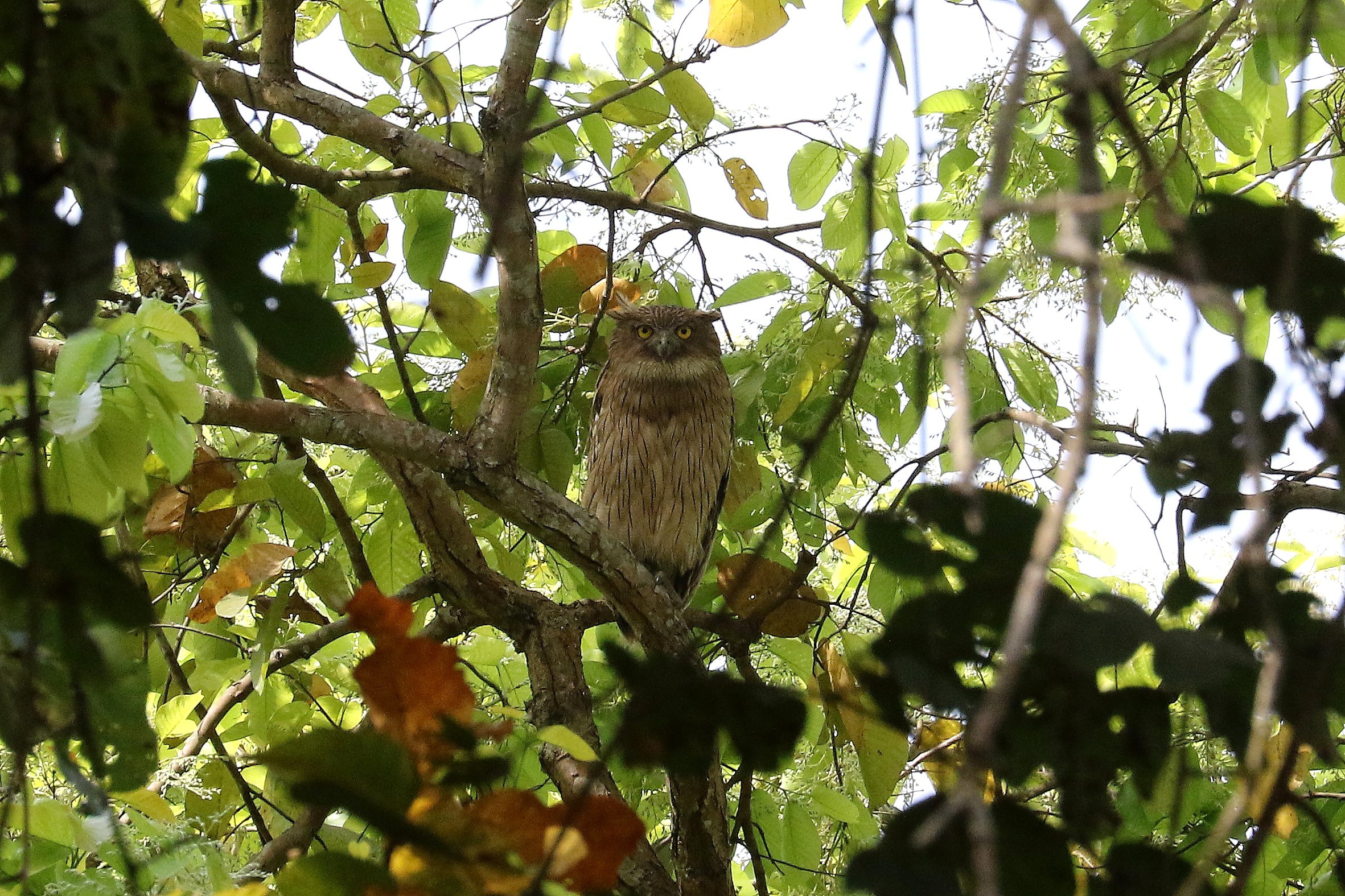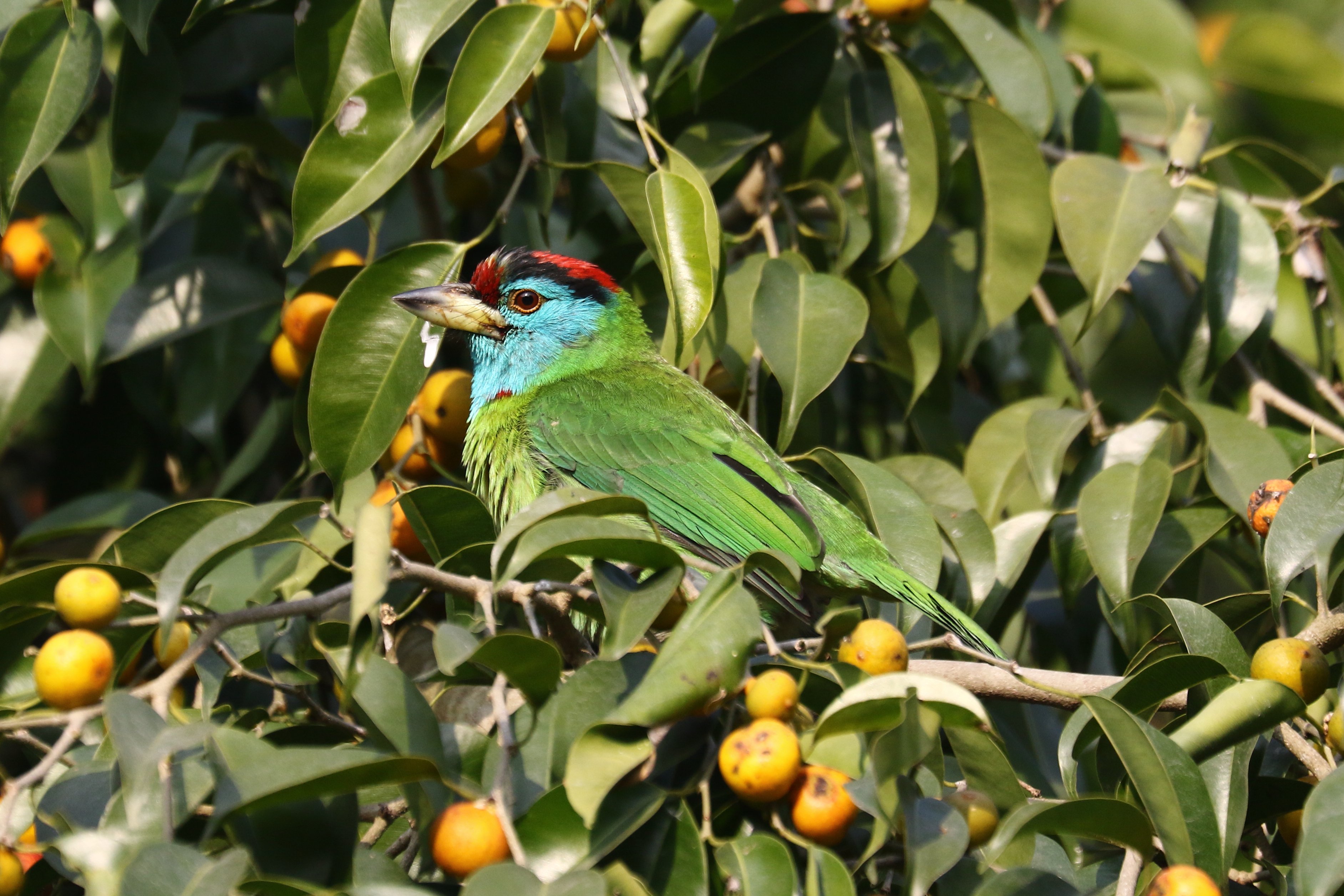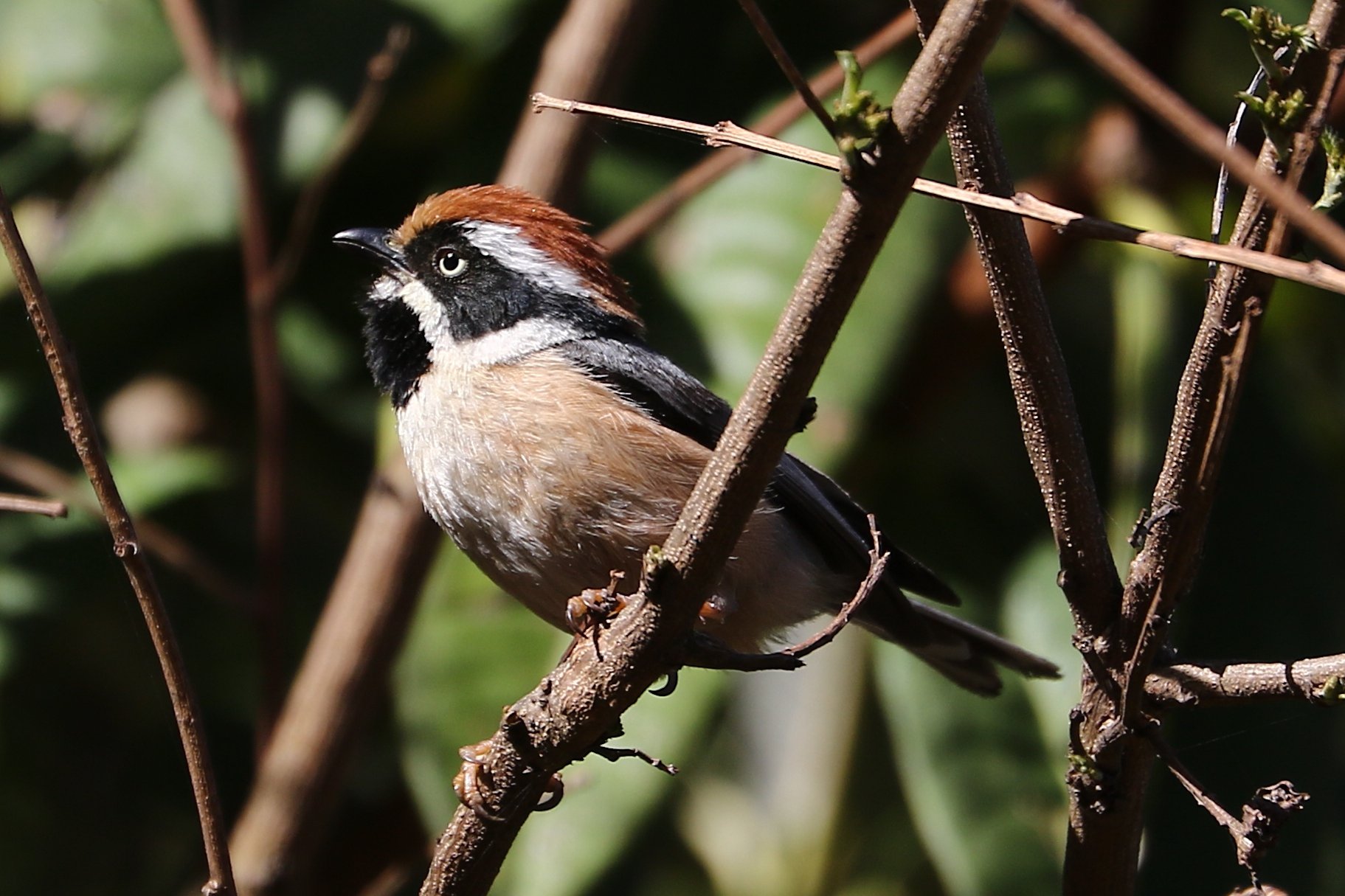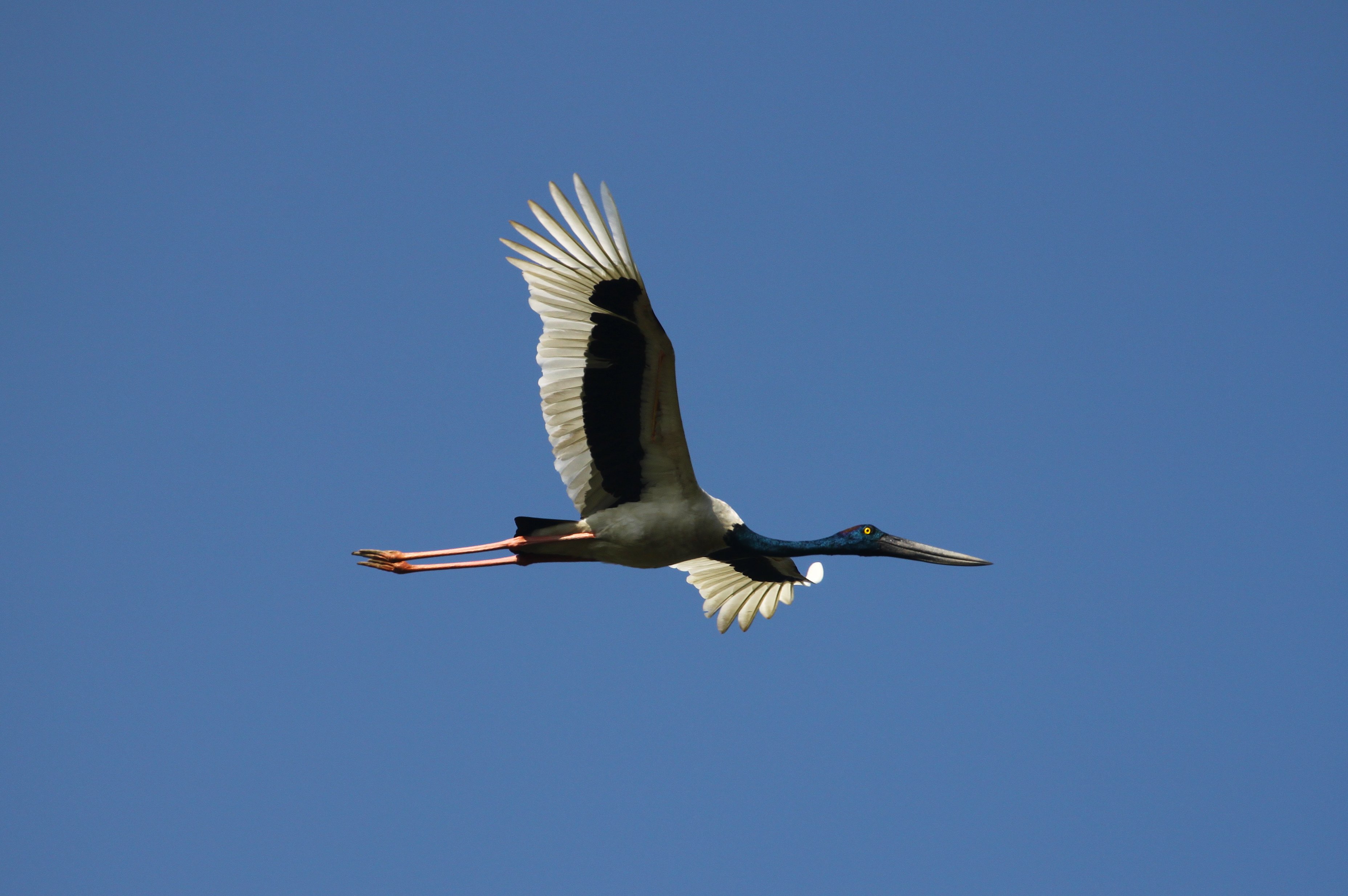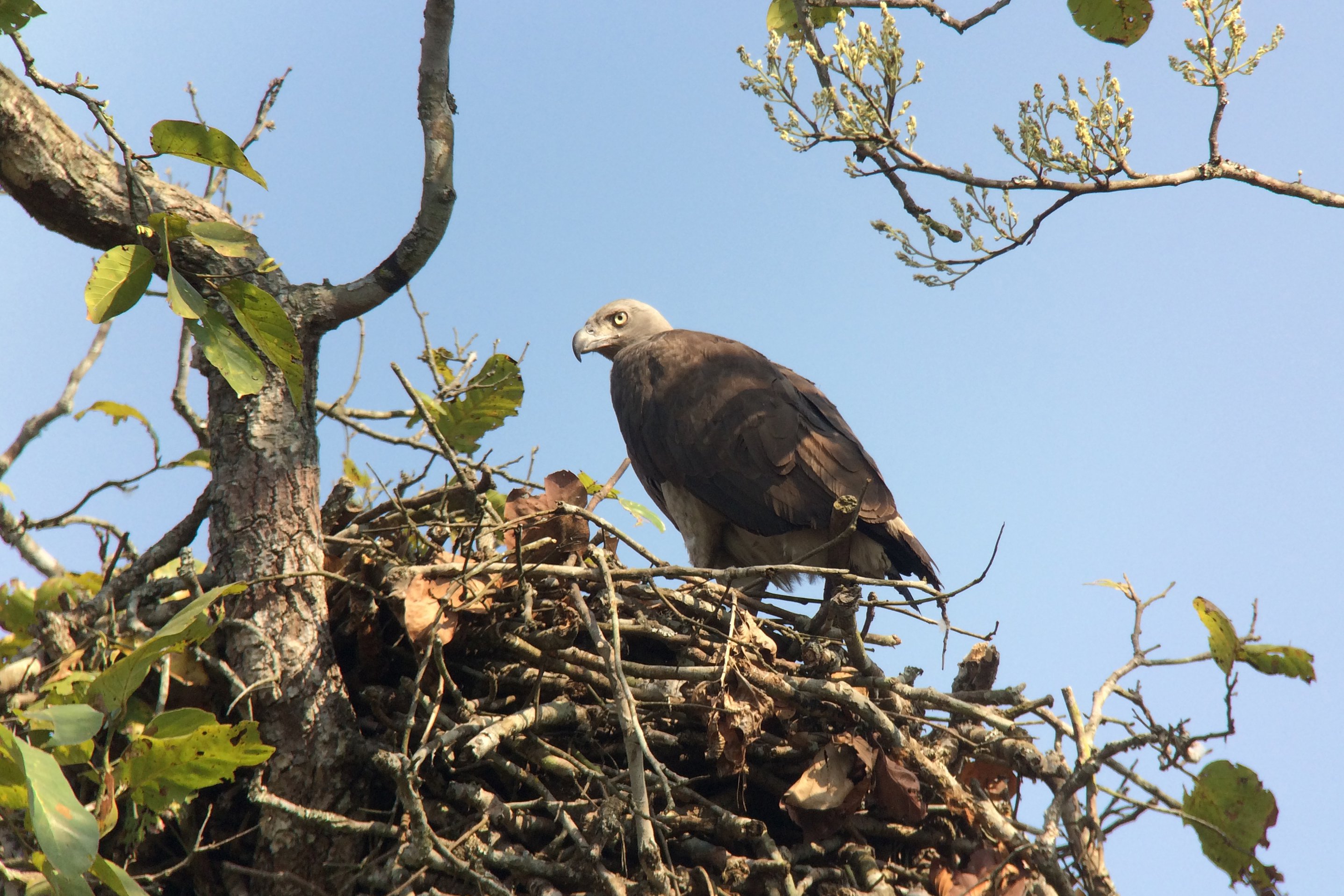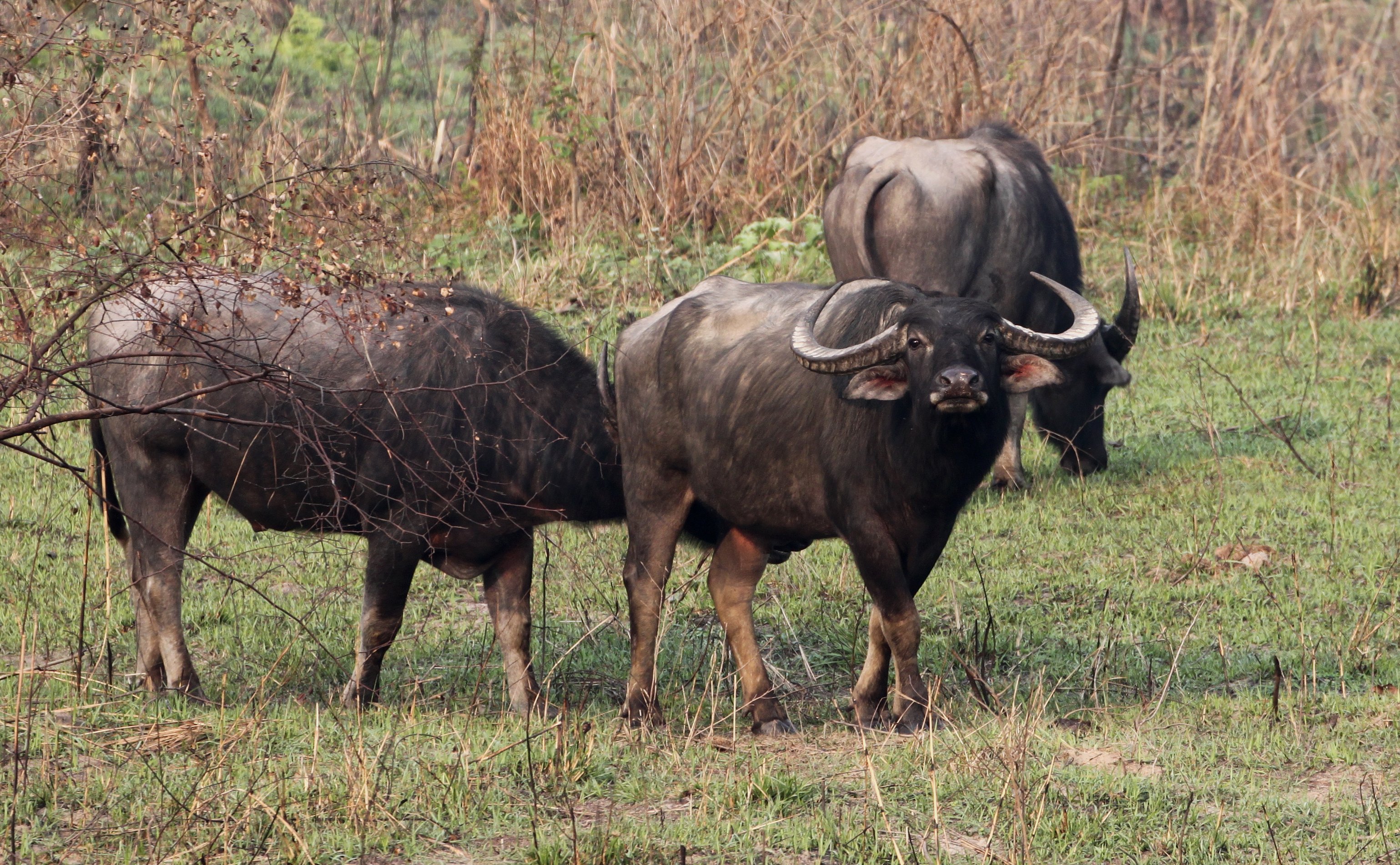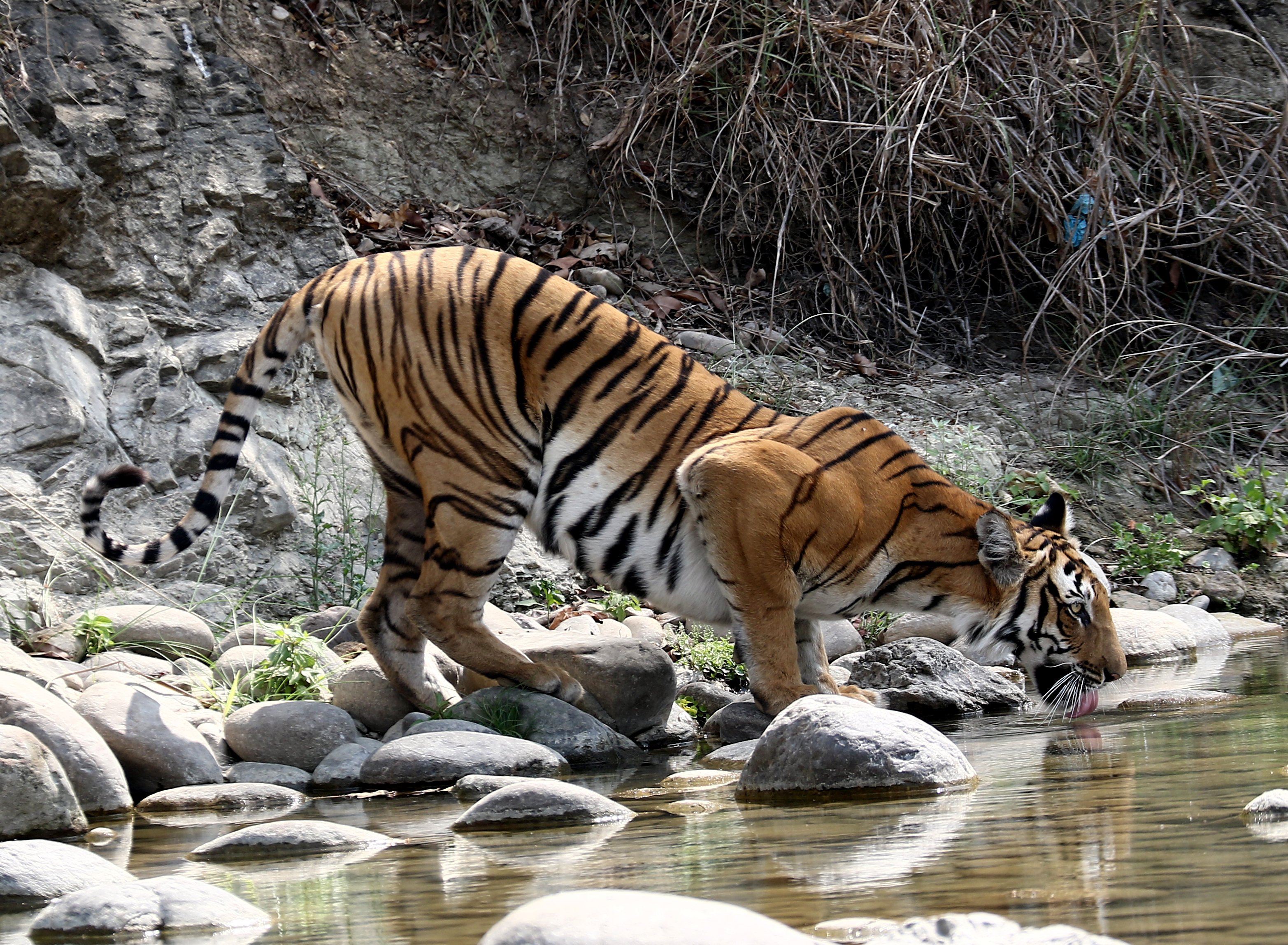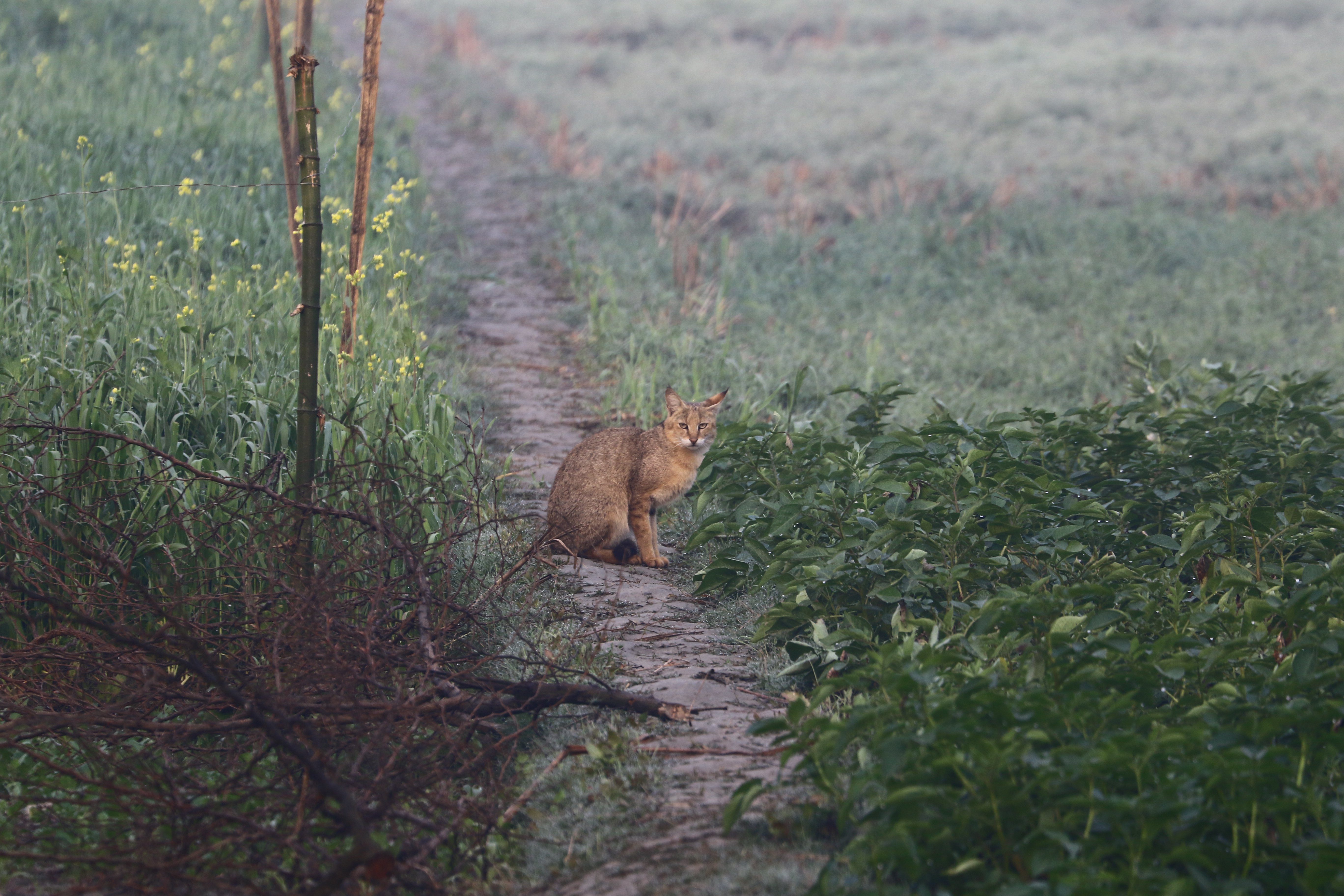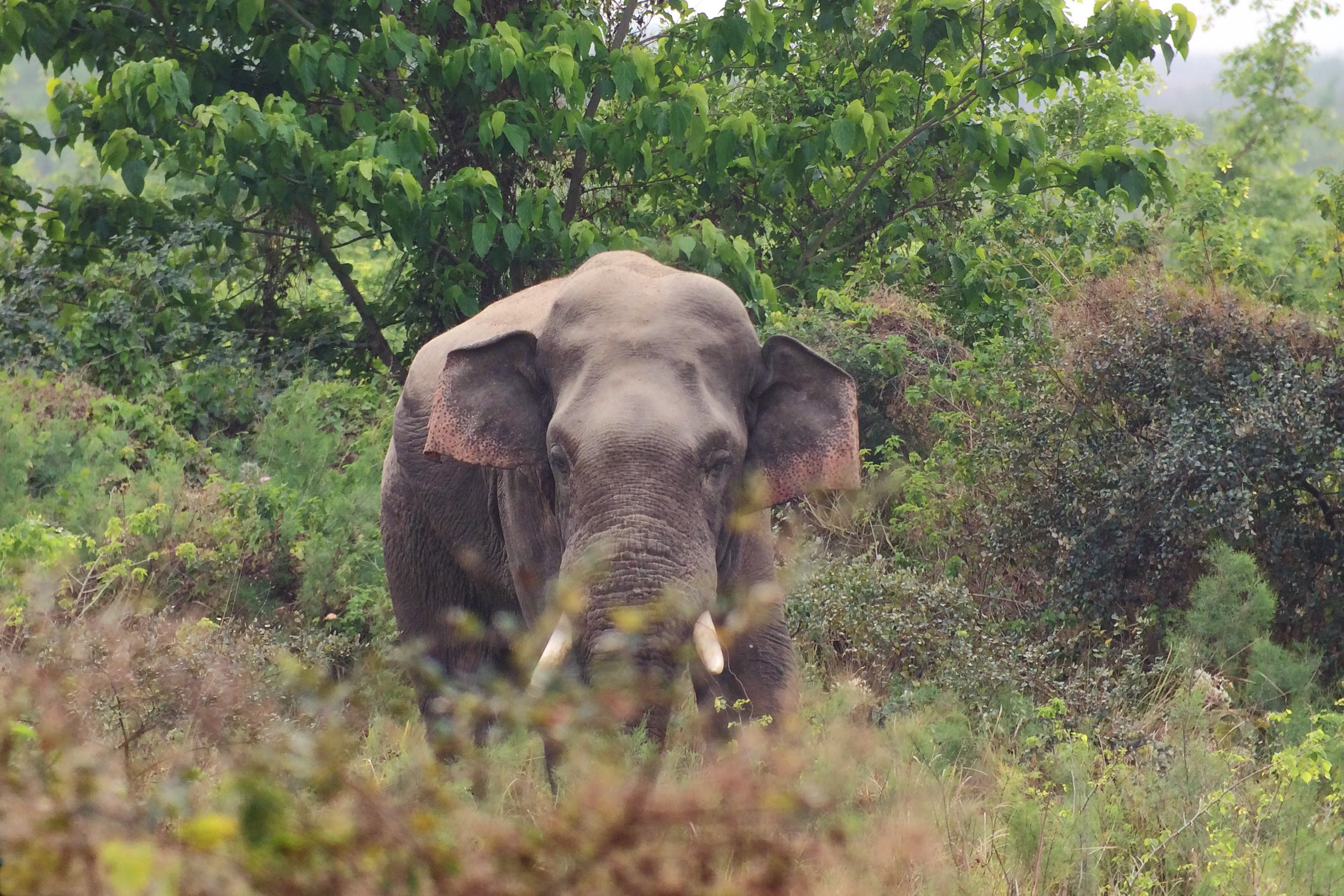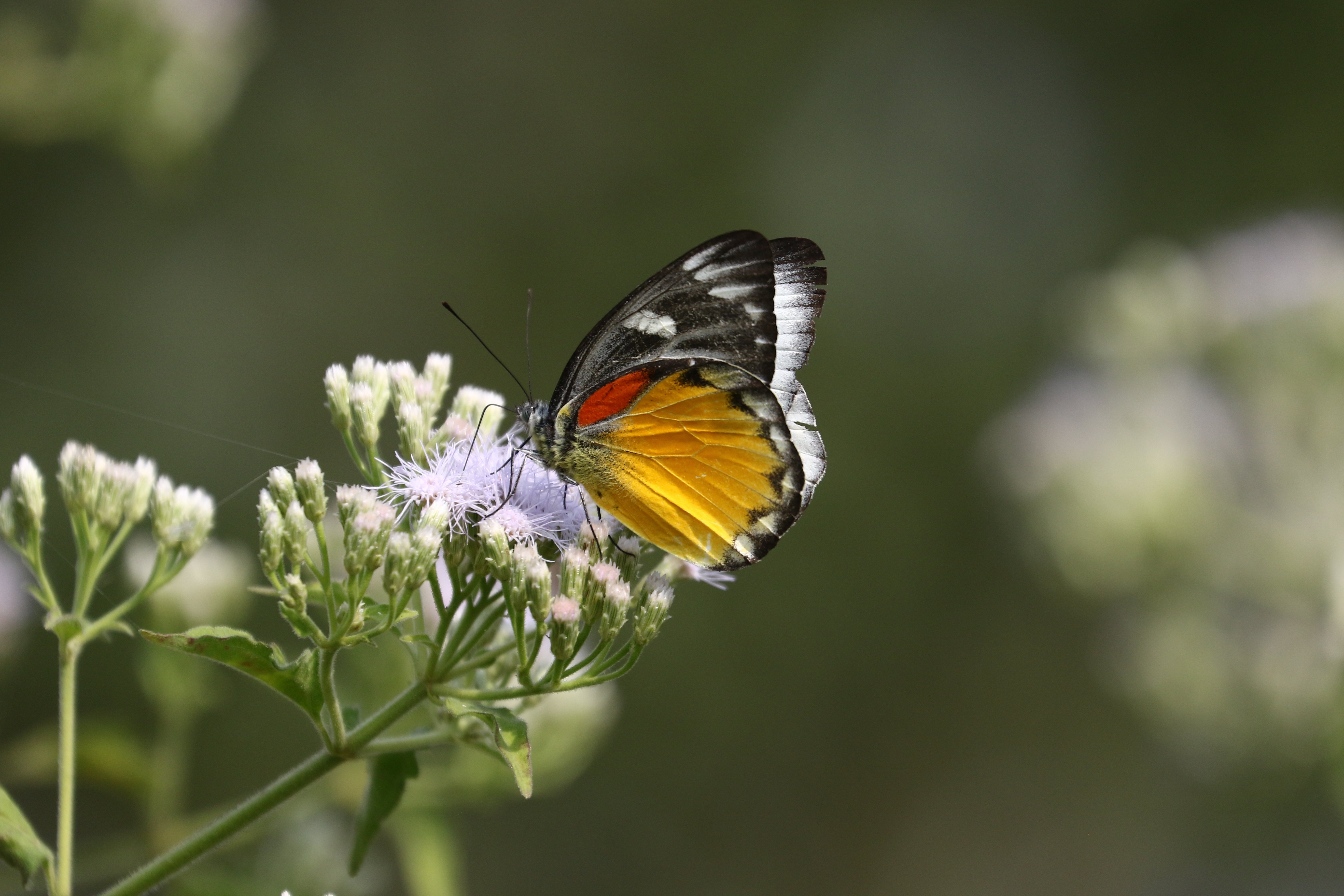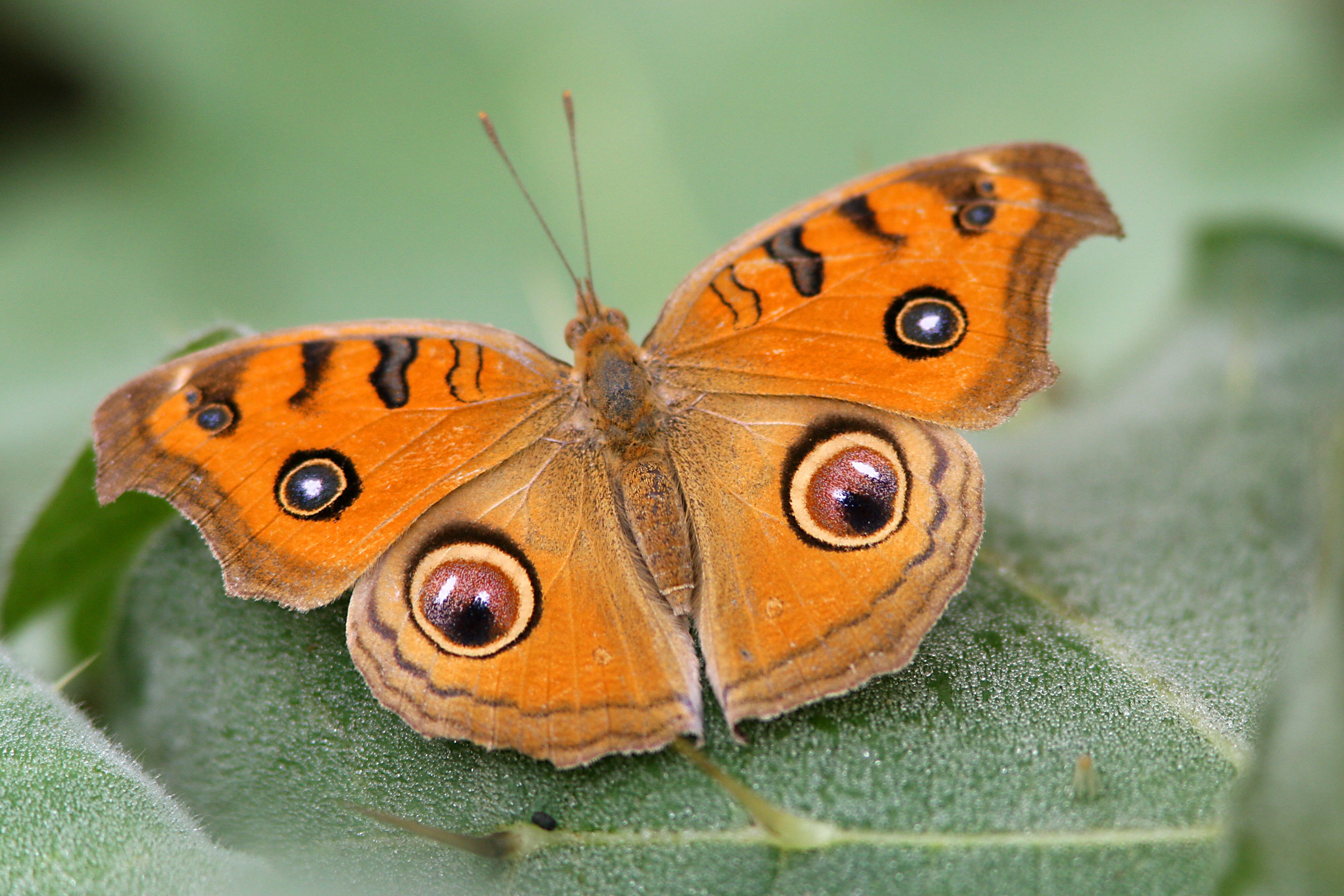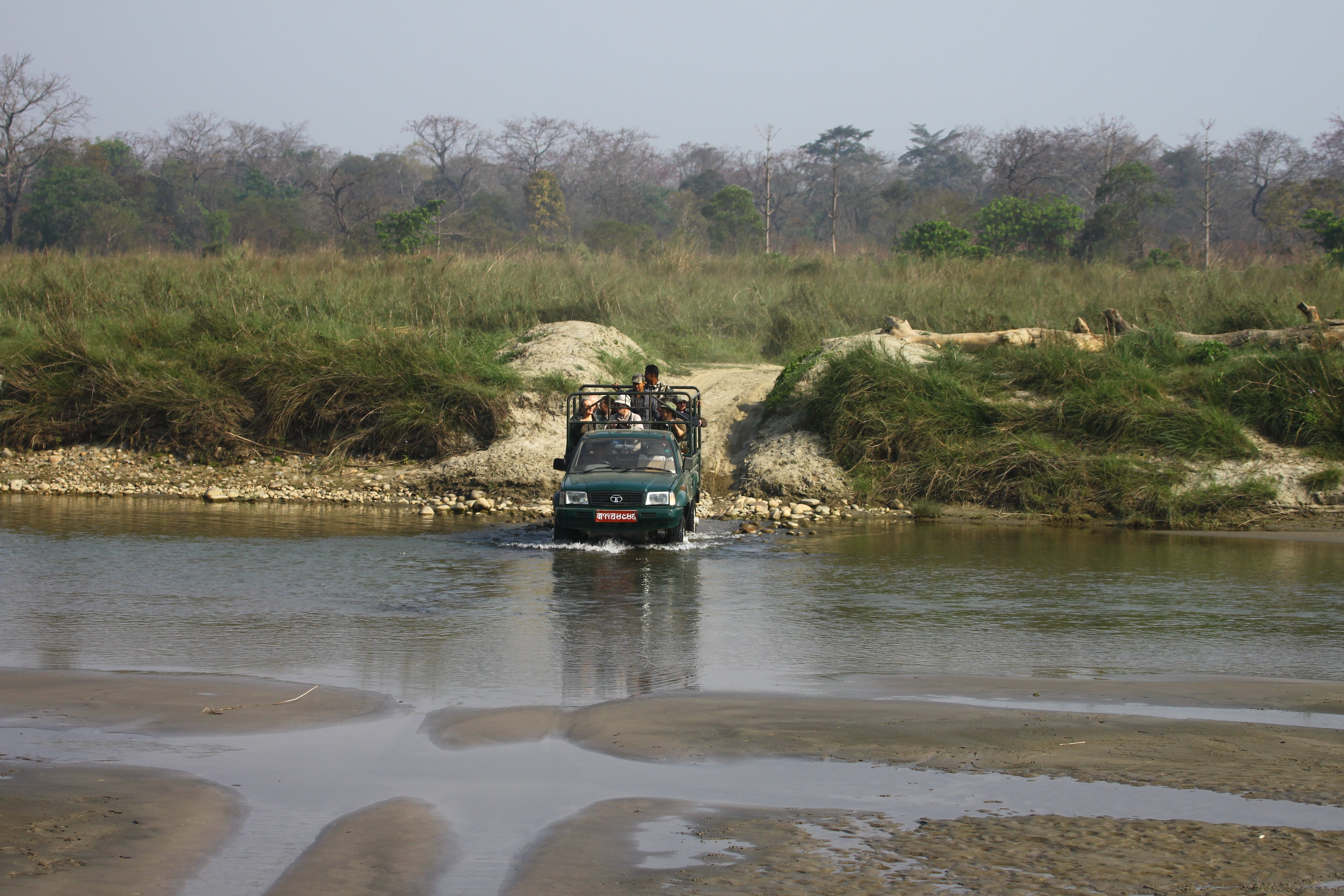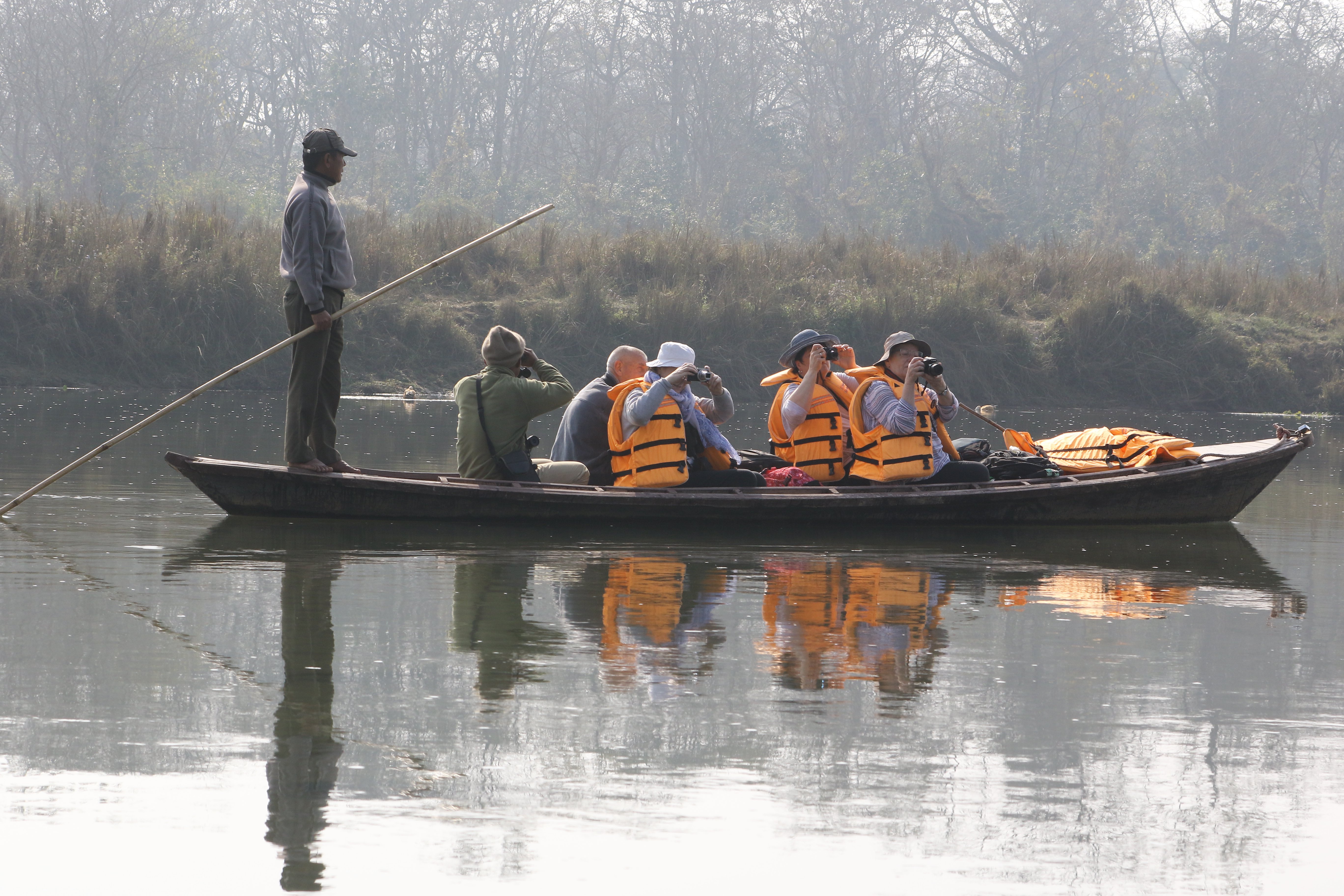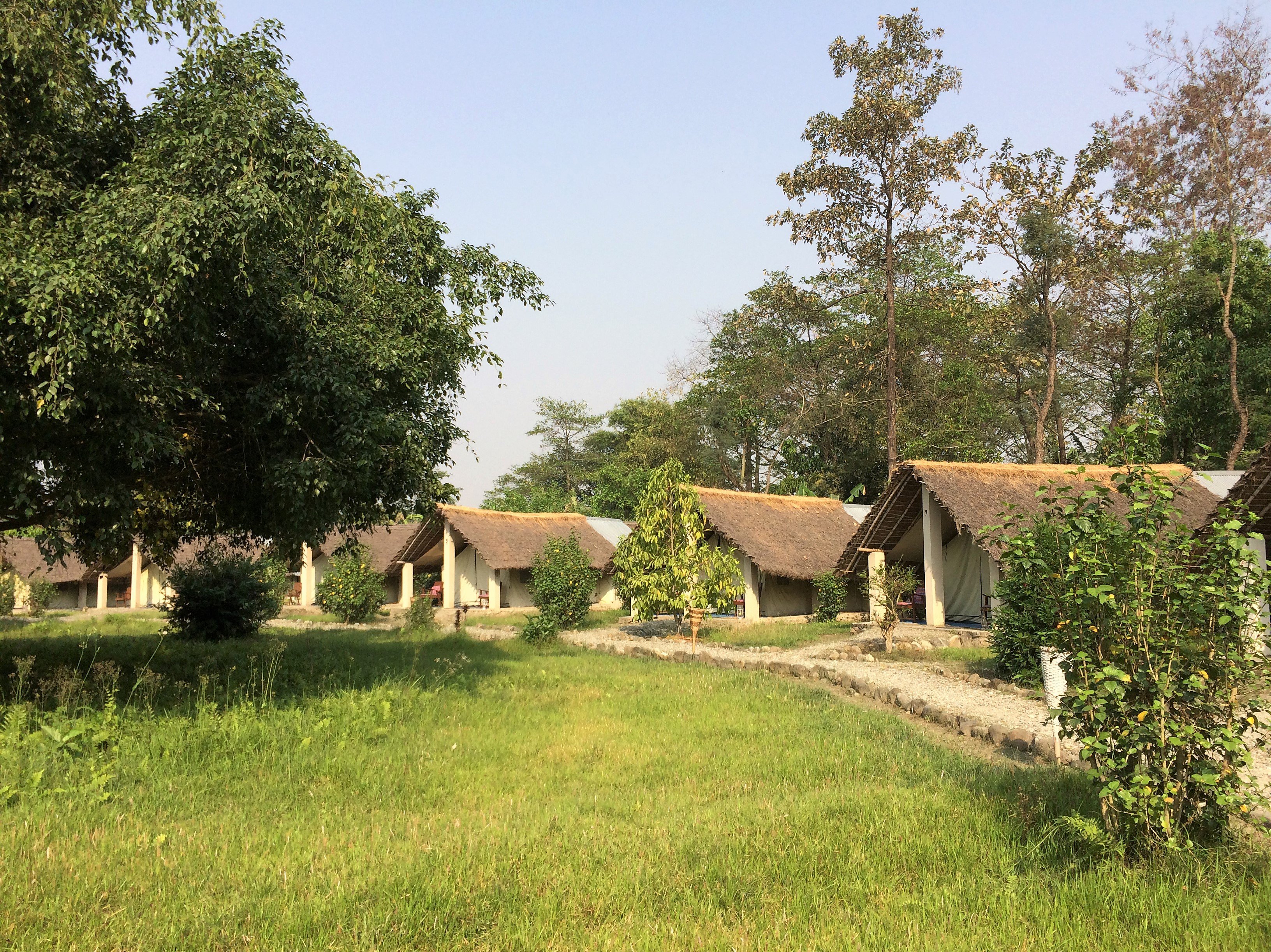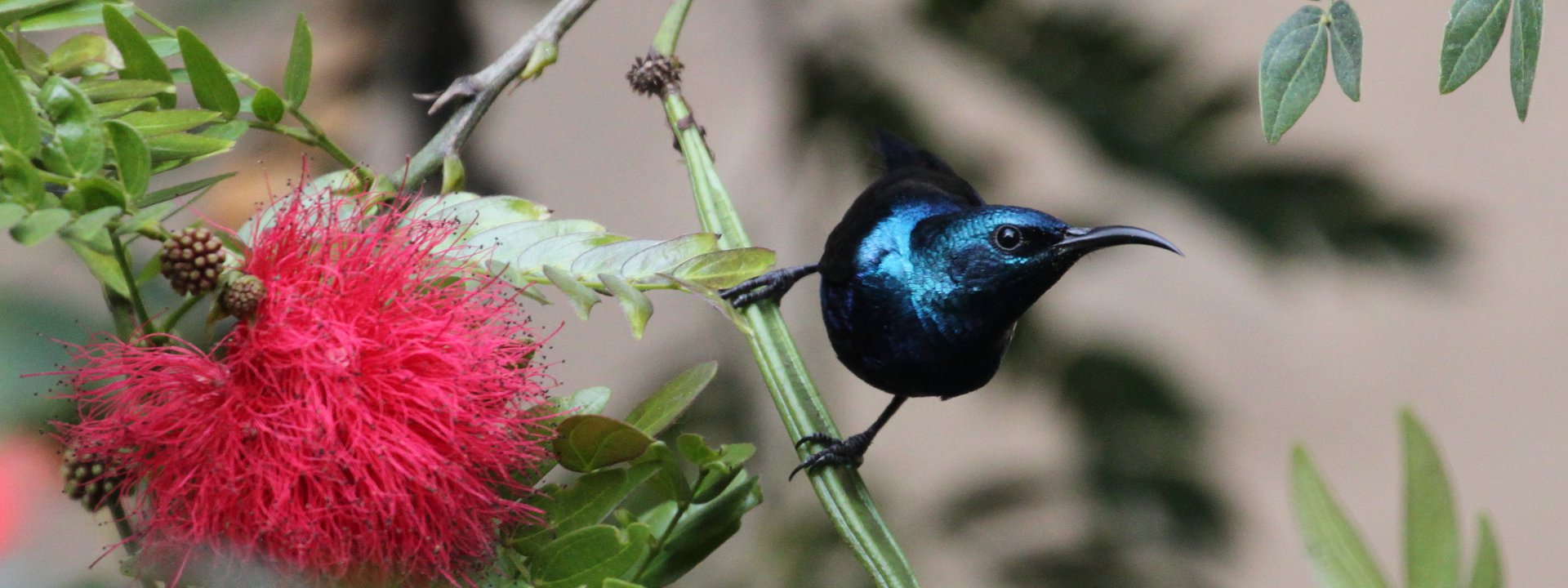Nepal
Chitwan, Koshi and Kathmandu
A 14-day, small group birdwatching tour to Nepal
Flanked by the world’s tallest mountains, the spectacular Himalayan kingdom of Nepal should be on every birder’s list of places to go! Focusing on three of the country's finest wildlife areas, our birdwatching tour to Nepal begins amidst the bird-rich hill forests of the beautiful Kathmandu Valley where we look for birds such as Fire-tailed Sunbird and Himalayan Bluetail.
From there, we then descend to the lowland jungles of Chitwan National Park, with its fantastic diversity of colourful tropical birds and a fine array of mammals including the rare Indian (One-horned) Rhinoceros.
A four-night stay beside the splendid Koshi Tappu Wildlife Reserve, Nepal's richest wetland site, adds a wealth of new birds to complete a wonderful tour and one on which we should see around 300 species.
Tour Dates & Prices
Sun 22nd February 2026
Sat 7th March 2026
- Available
Tour Cost: 14 Days from £3995
What's Included?
- Limosa Tour Leader
- 12 nights accommodation in Nepal
- Domestic flight from Biratnagar to Kathmandu
- All main meals and drinking water provided
- Ground transport by air-conditioned small coach and 4WD vehicles as required
- Boat trips at Chitwan and Koshi
- Afternoon city tour in Kathmandu with guide
- All excursions, entry fees/permits, tour-based tips (including drivers, local guides) and taxes
- Limosa checklist of birds, mammals, butterflies and dragonflies
Cost Excludes
International flights, insurance, Nepal visa costs (c.£25), drinks, airport meals/snacks and other items of a personal nature.
Notes
The Land Only Tour Cost is the amount you will pay Limosa.
Please note this price includes the cost of the Nepal domestic flight from Biratnagar to Kathmandu.
Despite the end of pandemic restrictions, we have taken the decision to continue to price our holidays as excluding international flights.
To keep the process as simple as possible, we are working very closely with a dedicated agent at Travel Counsellors, Sacha Barbato, who is essentially now our “in house” flight consultant.
Sacha is a highly experienced independent ATOL bonded travel agent, and his contact details are as follows: sacha.barbato@travelcounsellors.com and 01603 360099
He will be able to advise you which flights we are using for this holiday (as it will be important all clients are on the same internal flights) and will be able to book these for you.
This will also give you the option to travel from a regional airport if you prefer.
Tour Highlights
- Classic three-centre birdwatching trip to Nepal
- 4 nights in Kathmandu, including two days exploring the forested slopes of Phulchowki looking for Black-throated Bushtit, Fire-tailed Sunbird, White-browed Shrike-babbler and Himalayan Bluetail
- 4 nights at Chitwan, home to Great Hornbill, Himalayan Flameback and Blue-bearded Bee-eater
- Chance to come face-to-face with mammals such as the endangered Indian (One-horned) Rhinoceros
- 4 nights at tranquil Koshi Camp beside Nepal's most important wetland reserve for Swamp Francolin, Indian Courser, Smoky Warbler, Siberian Rubythroat and a chance for Ganges River Dolphin
- Led by Limosa's Nepali guide Badri Chaudhary and co-led by a member of the UK-based Limosa team subject to minimum numbers
Outline Itinerary
Fly to Nepal. Night Kathmandu
Full day birding the forested slopes of Phulchowki mountain. Night Kathmandu
We travel from Kathmandu to Chitwan National Park, birding as we go. Night Chitwan
Three full days enjoying the birds and wildlife of Chitwan National Park, including boat trip on the Rapti River. Chitwan (3 nights)
Transfer from Chitwan to Koshi, birding en route at Hetauda. Night Koshi Camp
Birding in and around the bird-rich Koshi Tappu Wildlife Reserve. Koshi Camp (3 nights)
We drive to Biratnagar for a late morning flight back to Kathmandu. Afternoon visit (optional but included) to Pashupatinath Hindu Temple and Boudhanath Buddhist Stupa. Night Kathmandu
Full day birding on Phulchowki. Night Kathmandu
Depart Kathmandu for UK

Flanked by the world’s tallest mountains, the spectacular kingdom of Nepal should be on every birder’s list of places to go! Its name is synonymous with images of pagodas, Buddhist stupas, Hindu temples and a panorama of snow-capped Himalayan peaks.
Although entirely land-locked, no other country on earth boasts such an incredible altitudinal range and the result is a bird list that totals well over 800 species, spanning everything from Great Hornbill and Indian Courser to Himalayan Cutia and Red- billed Blue Magpie.
Limosa's Nepal itinerary focusses on three of the country's very best wildlife areas and offering varied and rewarding birdwatching without the need for an arduous mountain trek.
Our tour is timed to coincide with the start of spring bird migration in Nepal. Although some wintering species will already have headed north, others will remain, and we also have the opportunity to see early arriving summer visitors. Add a host of exciting resident birds and, overall, we can expect to find around 300 species on this tour. There should also be some fantastic Asian mammals and a range of spectacular butterflies and colourful dragonflies.
We begin our holiday amid the moist hill forests of the Kathmandu Valley, where we explore the slopes of Phulchowki mountain. At 2,782m (c.9,100ft), this is a mere ‘hill’ by Nepalese standards but, if we have a clear day, we should able to enjoy our first views of the mighty Himalaya, soaring high above the clouds to the north. It takes a while to sink in: can they really be mountains we are looking at out there, above the clouds...........
On Phulchowki, we will explore altitudes from 1,600m (c.5,300ft) to 2,700m (c.9,000ft) via a track which goes right to the top. Although it may be chilly first thing, we can reasonably expect the daytime climate to be pleasantly warm, making this an ideal introduction to Asian birding. Red-billed Blue Magpie, Black-faced Warbler, Rufous-winged Fulvetta, Chestnut-bellied Rock Thrush, Himalayan Bluetail, Rufous Sibia, Black-throated Bushtit and Fire-tailed Sunbird are among the many possibilities that await us and, with luck, we might also come across scarce Himalayan specialities such as Kalij Pheasant, Striated Laughingthrush and the enigmatic Himalayan Cutia.
From Kathmandu, we descend to Nepal’s lowlands, the Terai, to explore the jungles of Chitwan National Park and with an outside chance of finding Ibisbill and Nepal’s one endemic bird, Spiny Babbler, on the way.
Undoubtedly one of the world’s great natural parks, Chitwan is blessed with a fine mix of lowland grassland and forest. Birds to look forward to include Great Hornbill, Collared Falconet, Himalayan Flameback, Stork-billed Kingfisher, Red-headed Trogon, Blue-bearded Bee-eater, Black-backed Forktail and Greater Necklaced Laughingthrush.
In addition to a fantastic diversity of colourful tropical birds, we also hope to encounter the peculiar fish-eating Gharial along with a fine array of mammals including the rare Indian (One-horned) Rhinoceros.
A four-night stay at a comfortable and permanent tented facility beside the splendid Koshi Tappu Wildlife Reserve completes our three-centre tour. The thatched tents here are walk-in safari-style, each with its own ensuite facilities attached. The grounds of our camp have been developed into a haven for wildlife with Black Bittern, Bronze-winged Jacana, Scaly Thrush and Siberian Rubythroat being just four on the long list of outstanding ‘garden birds’ to look forward to! As at Chitwan, the night sounds of cuckoos, owls and nightjars are magical.
We explore the local area from a convenient bund (raised bank) beside the Koshi River which protects the adjacent arable land from flooding, and also take a look at the nearby grasslands. Swamp Francolin, White-rumped Vulture, Indian Courser, Small Pratincole, Brown Fish Owl, Streak-throated Woodpecker and Smoky Warbler are among many possible species. The Koshi River itself is home to the endangered Ganges River Dolphin and other mammals to watch for here include wild Asian Elephant and Bengal Fox.
Astonishingly for a country that's only the size of England and Wales, almost 10% of the world’s bird species have been recorded in Nepal. If you have not visited Asia before, our tour offers a very special wildlife experience to start you off! While for those who have already travelled to this bird-rich continent, Nepal is sure to reward you with a wide range of new species and wonderful memories.
Our 2026 trip will be Limosa's eleventh tour to Nepal and will be led by Badri Chaudhary who is one of the country’s foremost bird guides and led our highly successful 2024 tour. The trip will also be accompanied by a member of the UK-based Limosa guide team subject to minimum numbers.
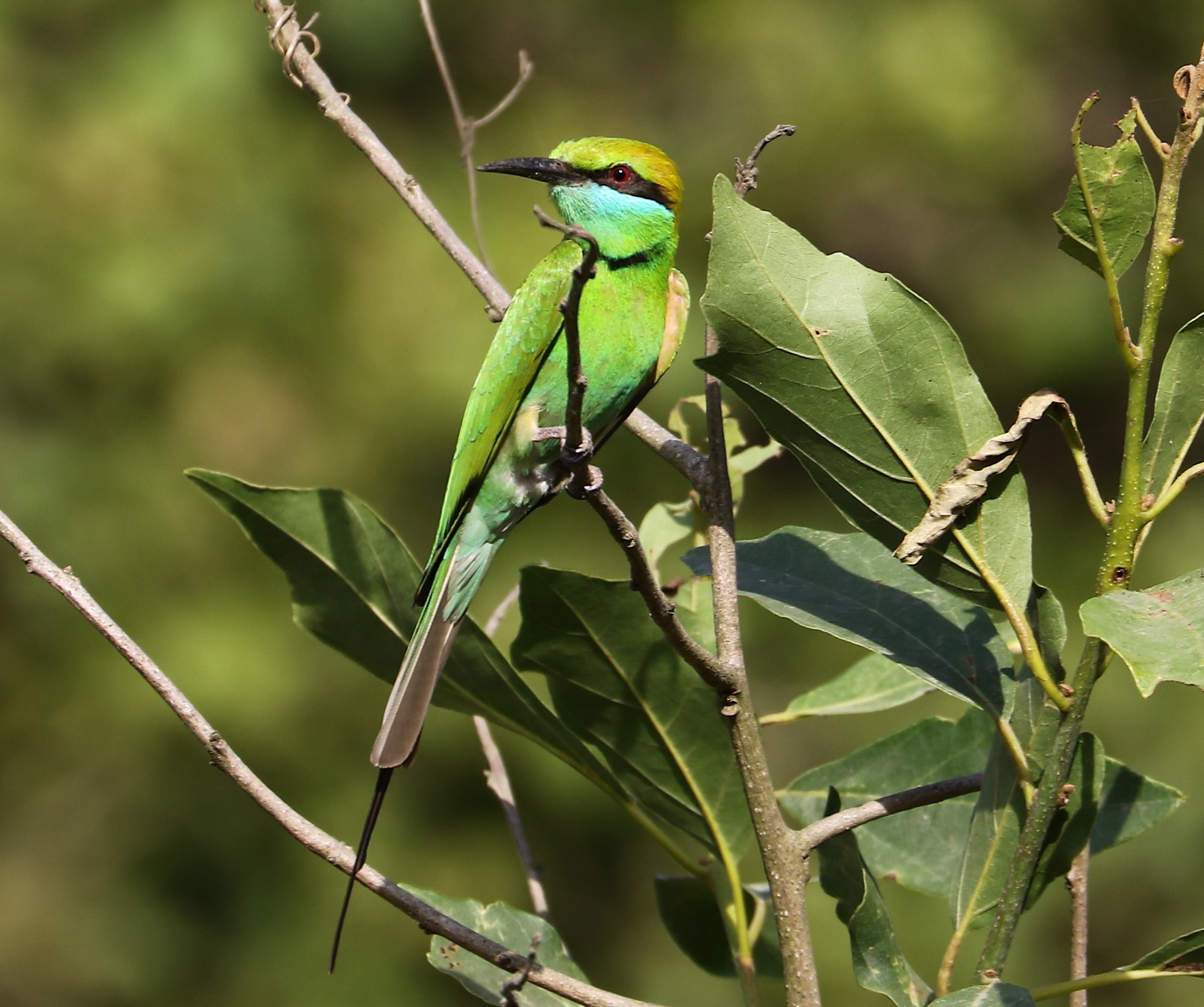
Days 1 - 2
FLY TO KATHMANDU
Our tour commences with a flight to Nepal. We will arrive in the capital, Kathmandu, in the morning of day two and transfer directly to our comfortable city hotel where we stay for two nights.
Kathmandu lies in a wide valley basin at an elevation of 1,400m (c.4,600ft) above sea level and is a bustling mix of the ancient and modern and after an opportunity to freshen up and enjoy lunch we will begin our exploration with an afternoon visit to the Gokarna Forest. Night at Hotel Tibet International, Kathmandu
Day 3
KATHMANDU VALLEY: PHULCHOWKI
After an early breakfast, we drive southeast for around an hour to reach Phulchowki mountain. Travelling in 4WD vehicles, we plan to take a track that leads right to the top and at 2,782m (just over 9,000ft), Phulchowki is the highest peak in the Kathmandu Valley.
Having brought a picnic lunch, we are able to spend the whole day in this area and we will have a second opportunity to explore here on our final full day in Nepal.
Weather permitting, we will concentrate on the upper slopes on one of our two visits, birding a little lower down on the second day. We will drive as far as road conditions allow, with our aim being to walk in stages back down the mountain to cover as much as possible of this splendid forest track on foot. With the range of species changing according to altitude, the list of birds it is possible to see on Phulchowki is exceptional.
If visibility is good, there are distant views through the forest towards some of the Himalaya’s tallest peaks as they protrude, improbably, above the clouds!
Phulchowki means 'meeting place of the flowers', so named after the thickets of rhododendron trees that clothe its lush, forested slopes. More bird species are found on this mountain than anywhere else in the Kathmandu Valley and a truly mouth-watering mixture of warblers, yuhinas, laughingthrushes, babblers, bulbuls, sunbirds and flowerpeckers will keep us on our toes!
Although patience and perseverance will be required as always with forest birding, the likes of Black-faced and Chestnut-crowned Warblers, Himalayan Bluetail, Red-billed Leiothrix, Ultramarine Flycatcher, Bar-throated Minla and Fire-tailed Sunbird are among a long list of colourful gems to look for.
Amongst the commonest birds on the upper slopes are Rufous Sibia and a range of Phylloscopus warblers: we should be able to compare Ashy-throated, Blyth’s Leaf, Buff-barred and Grey-hooded. We will also keep our eyes open for Striated Bulbul, Himalayan Black-lored Tit, White-browed and Rufous-winged Fulvettas, Rufous-gorgeted Flycatcher, Chestnut-bellied Rock Thrush, Blue-winged Minla, Fire-breasted Flowerpecker and both Whiskered and Stripe-throated Yuhinas.
On the lower and middle slopes, we hope to find birds such as Kalij Pheasant, Red-billed Blue Magpie, Nepal Fulvetta, Himalayan Shrike-babbler, Black-throated Bushtit, Streak-breasted Scimitar Babbler, White-throated and Striated Laughingthrushes, Great Barbet and Green-tailed Sunbird. If we are very lucky, we might also find the rare and localised Himalayan Cutia, a specialist of mossy tree trunks.
Taking a break from seeking passerines and looking up to the skies, Black Eagle and both Cinereous and Himalayan Vultures are possible.
Bird activity inevitably quietens down by early afternoon and after both visits we can expect to arrive back in Kathmandu with plenty of time to unwind before another tasty dinner. Night at Hotel Tibet Interational, Kathmandu
Day 4
KATHMANDU TO CHITWAN
Leaving Kathmandu, we will drive west then south as we descend from the hills into Nepal’s lowlands. We will make a series of short stops along the way, looking for animated Plumbeous Water Redstarts and sparkling White-capped Redstarts by small streams, and River Lapwing beside the wide but fast-flowing Trishuli River.
If we are very lucky, we may chance upon a wintering Ibisbill (although it is possible that they may already have departed for their breeding grounds).
Further on, a roadside grassy bank might seem an improbable place to look for another special bird but this is the habitat of Nepal’s one and only endemic bird - the Spiny Babbler - and we hope to find one here. Wallcreeper and Bonelli’s Eagle both inhabit areas not far away.
Depending on traffic, we may take lunch at a restaurant where Green-billed Malkoha and Large Cuckooshrike are amongst an impressive list of ‘garden birds’. The grounds are also a haven for butterflies, many with names to conjure with such as Lemon Pansy, Great Eggfly and Colour Sergeant, while a water feature here is home to a little-known dragonfly called the Granite Ghost!
It will certainly be hard to tear ourselves away from the fascinating wildlife and sit down for lunch but the momos (meat-filled dumplings) are sure to tempt us!
Continuing south, we complete our journey to Royal Chitwan National Park, aiming to arrive as the day draws to a close. We may be greeted by the calls of Brown Hawk-Owl in the grounds of our well-appointed lodge just outside the park, our base for a four-night stay. Night at Tigerland Safari Resort, Chitwan
Days 5 - 7
CHITWAN NATIONAL PARK
Chitwan’s splendid Sal forests and riverine grasslands encompass an area of more than 900 square kms (350 sq. miles) and boast a greater variety of wildlife than anywhere else in Nepal. Almost 500 species of birds have been recorded within the boundaries of this magnificent park and we can expect to encounter a good cross-section of these during the course of our stay.
We spend three full days exploring the habitats here by various means: walking in the grasslands outside the park, using open top 'jeeps' to go into the heart of the forest, and relaxing on a boat trip down the Rapti River.
We are sure to be impressed by the night sounds from our rooms, with the songs of Large-tailed and Savannah Nightjars to listen for and the manic calls of Common Hawk-Cuckoos (or ‘brain- fever’ bird) soon to be ingrained in our memory!
As the nocturnal chorus dies away, the ‘familiar’ crowing of Red Junglefowl (the real McCoy here, of course!) greets the dawn.
With the first rays of light, new birds might well include Fulvous-breasted Woodpecker, Coppersmith Barbet, Jungle Babbler, Black-hooded Oriole and Red-whiskered Bulbul.
The adjacent grasslands have their own distinctive avifauna such as Bengal Bush Lark, Paddyfield Pipit, Slender-billed Babbler, Indian Grassbird and White-tailed Stonechat. Red-naped Ibises feed on the marshy margins, where we also hope to find Himalayan Rubythroat, Spotted Bush Warbler, Chestnut-capped Babbler and Brown Crake.
Chitwan's varied woodlands hold a fantastic range of exotic species and we won’t need to venture far from our lodge before encountering Oriental Pied Hornbill, both Green and Chestnut-headed Bee-eaters, Himalayan Flameback, Common Iora and Chestnut-bellied and Velvet-fronted Nuthatches.
It will, however, be on our 'jeep' drive deeper into the jungle that we will have the chance to see more of Chitwan's specialities. With luck, we may find Spot-winged Starling, the most localised member of its family in Nepal, feeding on a flowering Red Cotton Tree. Oriental Darter, Grey-headed Fish Eagle and Stork-billed Kingfisher live side-by-side on one particular lake, whilst woodpeckers here include both Greater and Lesser Yellownapes.
Our eagle-eyed local spotters will be assets as we drive slowly along, looking out for Scarlet and Rosy Minivets, Bronzed and Hair-crested Drongos, Red-breasted and Plum-headed Parakeets, Crested Treeswift and Puff-throated Babbler.
We will hope to come across a feeding flock, alive with birds such as Greater Racket-tailed Drongo, Lesser and Greater Necklaced Laughingthrushes, Common Green Magpie and White-browed Scimitar Babbler. Great Hornbill, Blue-bearded Bee-eater, Red-headed Trogon, Collared Falconet and Black-backed Forktail are further attractions in the park and their presence will encourage us to keep looking! We hope to find Indian Peafowl in full display, yet another spectacle to live long in the memory.
A boat trip will provide a lovely contrast to our forest birding and as we drift along, we hope to get 'up close and personal' with birds such as Little Cormorant, Lesser Adjutant, Asian Openbill, Red-wattled Lapwing, White-browed and Citrine Wagtails and Rosy Pipit. We might also spot the rare and decidedly odd-looking, long-snouted, fish-eating Gharial lounging on the bank.
We specifically look for mammals during our afternoon 'jeep' drives. We have good chances to encounter the endangered Indian (One-horned) Rhinoceros and the sight of one of these great ‘armour-plated’ beasts crashing towards us through the undergrowth or gazing at us from a safe distance along the track is an experience one is unlikely ever to forget!
Of Chitwan’s other and more numerous large animals, we are likely to see Wild Boar, Sambar, the lovely Spotted Deer, Hog Deer, Rhesus Macaque, Grey Langur and the aptly named Marsh Mugger crocodile. Very much rarer, Tiger, Leopard, Sloth Bear and Gaur are also present at Chitwan but our chances of actually seeing them here are, unfortunately, extremely slim! Three further nights at Tigerland Safari Resort, Chitwan
Day 8
CHITWAN TO KOSHI
Leaving the jungles of Chitwan behind, we head east towards the Koshi River. It is a full day’s drive along the east-west highway, which runs through the heart of Nepal’s Terai region. By making an early start, we will be able to do a little birding en route with Indian Rollers and Ashy Woodswallows to watch out for as we sit back and enjoy the captivating images of everyday life in lowland Nepal.
We will aim to arrive at our destination just as dusk settles over the great Koshi River. Our base for the next four nights is a permanent tented facility nestled beneath shady trees in a remote corner of this internationally important RAMSAR site. Although it is situated well off the beaten track, we think you will be pleasantly surprised by the standard of accommodation available here, and Koshi Camp has been a firm favourite with everyone on past tours. Night at Koshi Camp
Days 9 - 11
KOSHI TAPPU WILDLIFE RESERVE
Koshi Tappu Wildlife Reserve is located in the far eastern corner of Nepal, close to the country's southern border with India. It is renowned as Nepal’s finest wetland, but the amount of time we spend looking at the river and marshland actually forms only a small proportion of our birding here.
The grounds of our camp have been developed into a real haven for wildlife with the ponds holding Black Bittern, Bronze-winged Jacana and White- breasted Waterhen and we also have a good chance of seeing the gorgeous Siberian Rubythroat! Asian Koel (another bird whose repetitive call you will soon come to recognise), Yellow-footed Green Pigeon, Black-rumped Flameback, Taiga Flycatcher, the spiky-crested Indian Paradise Flycatcher, Scaly Thrush and Blue-throated Barbet are among many other possibilities in and around the 'garden'.
As at Chitwan, the night sights and sounds are simply magical. We can expect to hear jackals, cuckoos and nightjars and to see both Spotted Owlet and Brown Hawk-Owl, as well as Black-crowned Night Herons and Indian Flying Foxes as they leave their daytime roosts.
We plan to spend two mornings exploring the local area from a bund which protects the adjacent arable land from flooding.
Wetland birds include Grey-headed Lapwing and Black-headed Ibis, whilst Striated Grassbird and Smoky Warbler are found in the reedy fringes. The trees, bushes and long grass are home to an array of birdlife including Swamp Francolin, White-rumped Vulture, Red-necked Falcon, Streak-throated Woodpecker, Whistler’s Warbler and Black-throated Thrush. If luck is on our side, our local guides may also know where to find a pair of Brown Fish Owls.
On one morning, we plan to drive to an area of short grassland adjacent to the Koshi River. It may be necessary to cross the water on a boat to an otherwise inaccessible island in our quest for Indian Courser, Yellow-wattled Lapwing, Indian Stone-curlew, Small Pratincole, Pallas’s Gull, Sand Lark and Ashy-crowned Sparrow-Lark.
To the south, near the barrage across the broad river, we may be lucky to spot the endangered Ganges River Dolphins that live here.
Other exciting mammals at Koshi include Jungle Cat, Wild Water Buffalo (one of the world’s most endangered large mammals) and Nilgai (or ‘Blue Bull’), the subcontinent’s largest antelope. We may also find wild Asian Elephant, Indian Grey Mongoose, Golden Jackal and Bengal Fox.
As we are in the lowlands, it is likely to be hot enough for us to benefit from a siesta in the afternoon, although the avian delights around our camp are likely to prove irresistible to many!
Afternoon explorations around the camp are sure to produce more good birds and, in addition, those interested in insects can photograph, identify or simply enjoy the feast of butterflies and dragonflies. Even those whose interest has previously centred solely on birds can hardly fail to be impressed by Variegated Flutterers, Malay Lilysquatters and Fulvous Forest Skimmers and not just for their names!
The camp is situated near a village and it is worth taking a wander to see the locals going about their daily lives. The children, in particular, are sure to give you a warm welcome! Three further nights at Koshi Camp
Day 12
DRIVE TO BIRATNAGAR, FLY TO KATHMANDU
After some final birding, we reluctantly leave Koshi Camp and drive to Biratnagar Airport, where we catch a short flight back to Kathmandu. The flight takes about 45 minutes and, if the visibility is good, we should be treated to a glorious panorama of Himalaya’s tallest peaks to the north with the summit of mighty Mount Everest away in the distance.
After a late lunch, those who wish can spend the rest of the afternoon on a sightseeing tour of this fascinating city with an English-speaking guide (this is optional but included within our tour price), and we expect to visit Pashupatinath Hindu Temple and Boudhanath Buddhist Stupa. Night at Hotel Tibet International, Kathmandu
Day 13
KATHMANDU VALLEY: PHULCHOWKI
We will have a further opportunity to sample the magic of Phulchowki.
Since a great many species here are restricted by altitude, we may well choose to investigate areas of forest at a different elevation from those we visited at the start of our tour. With the spring migration now well underway, the birds we see today are also likely to include some recently arrived migrants.
In any event, Phulchowki's wooded slopes are always rich in birds and, with no two visits ever alike, we are assured of some splendid montane forest birding as our time in Nepal sadly draws to a close. Night at Hotel Tibet International, Kathmandu
Days 14
FLY KATHMANDU TO UK
Depending on flight times, we should have the opportunity for some final local birding before we leave our hotel and transfer to Kathmandu airport for our flight home.
Subject to which flights we use (a change of planes will be needed as there are no direct flights between Nepal and the UK), we are likely to arrive back in the UK the same day, otherwise it will be early in the morning of Day 15.
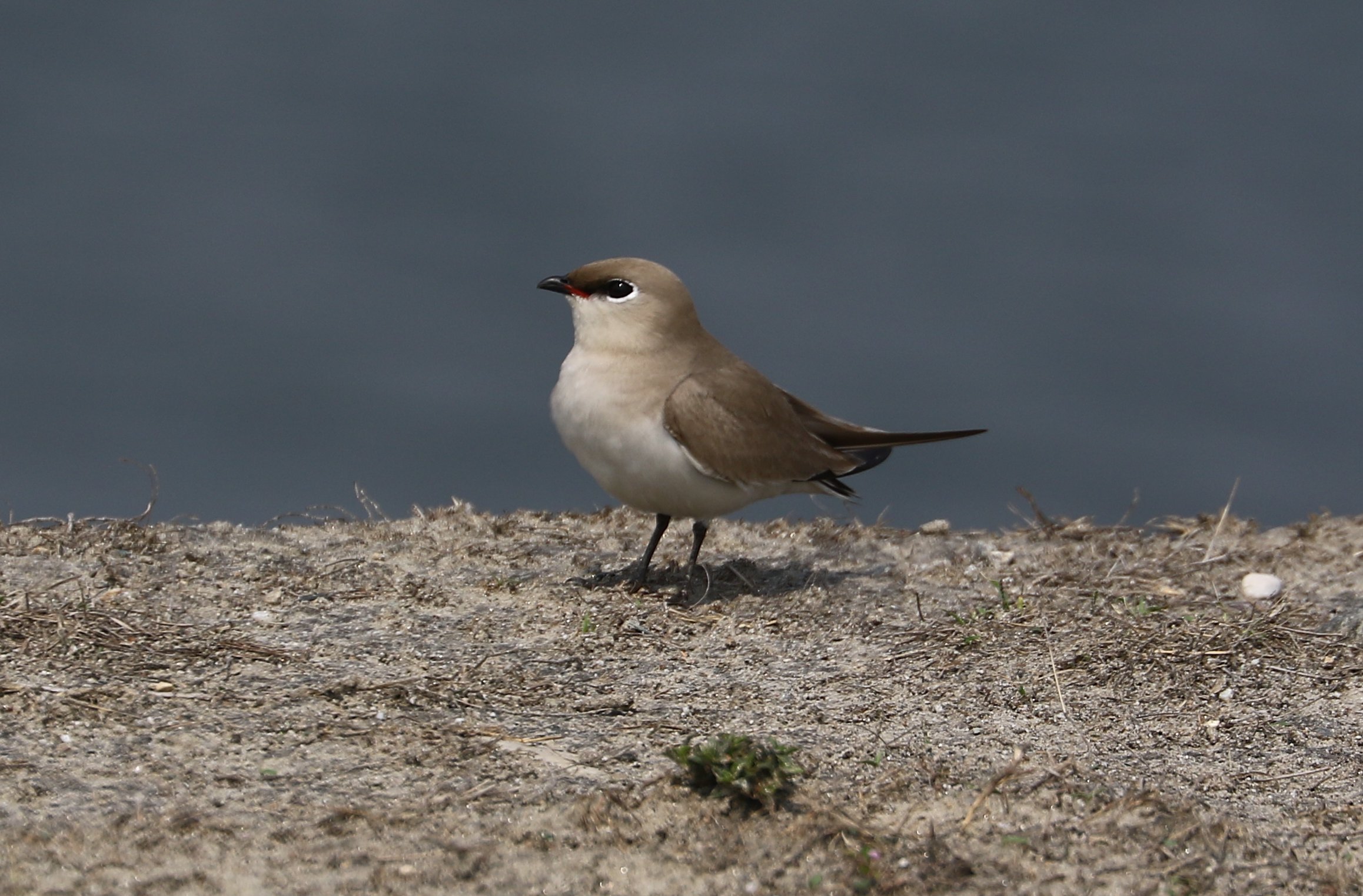
WHAT TO EXPECT
A 14-day birdwatching tour to Nepal featuring the country’s top three sites: Kathmandu Valley, Chitwan National Park and Koshi Tappu Wildlife Refuge. Two-thirds of our tour is spent in Nepal's lowlands. The maximum elevation on this tour is at Phulchowki: 2,782m (c.9,100ft).
Overall, this tour is not a strenuous one but you should be prepared for early starts, which are the norm for birding tours in tropical regions, where the daylight hours are relatively short (approximately 6.00am-6.30pm in Nepal during February-March) and bird activity is at its peak early and late but generally dies away almost completely during the hotter, middle part of the day.
Especially in the sultry lowlands, it will be important to be in the field at dawn so we can hear the birds singing and calling as the day starts up. In some instances, this may be our only chance to discover if certain species are present or not, so we will naturally want to make the most of this opportunity.
After a lull during the midday hours, the birding tends to pick up again from mid-afternoon, so we are likely to be out until near dusk at Chitwan and Koshi. Our guide(s) will be able to advise you locally about the day's events - if you wish to opt out of a particular session or walk, please don’t be afraid to let them know.
We have two long drives on the tour – Day 4 and Day 8 – which provide a chance to relax and take in the unique Nepalese landscape and life in general.
In late February and early March, the weather in lowland Nepal is generally fine and although it may be cool first thing, it soon warms up, with daytime temperatures typically in the range of 10-30°C (50-86°F).
In the Kathmandu Valley and at Phulchowki, it will be colder, generally 6-23°C (43-73°F) and it might feel distinctly chilly first thing. We may still encounter frosts on the higher slopes of Phulchowki, where it can be cold until the sun gets up and there may even be a few patches of ice remaining on the track.
Most March days experience 8-9 hours of sunshine and rainfall is low at this time of year. Nevertheless, we may encounter a storm or two in the lowlands, so be sure to pack your waterproofs just in case, plus some warm clothing for early and late in the day!
Away from the denser forest, there will be good photographic opportunities for birds, mammals, butterflies, scenery and culture.
BIRDS
290-330 species
MAMMALS
15-20 species, including the endangered Indian (One-horned) Rhinoceros and Wild Water Buffalo
BUTTERFLIES
40-50 species
DRAGONFLIES
10-15 species
ACCOMMODATION
12 nights accommodation in Nepal. We begin and end our tour in Kathmandu, where the Tibet International is a good quality tourist hotel in the city.
Moving next to Chitwan, we stay at the Tigerland Safari Resort, a jungle safari lodge which is close to the Rapti River and National Park. Bedrooms here are large and comfortable and have private facilities.
Koshi Camp, beside the remote Koshi Tappu Wildlife Refuge, is a permanent tented facility equipped with thatched, 'walk-in' safari-style tents, comfortable but simply furnished, each with twin beds and their own private facilities (with hot showers and western-style WCs) attached. There is electricity in all the tents for charging devices and lights.
Both the lodge at Chitwan and Koshi Camp have their own separate dining room and bar.
MEALS
All main meals are included in the tour price (and with drinking water also provided), commencing with dinner following our arrival in Kathmandu on Day 2 and concluding with breakfast/lunch there on Day 14.
Breakfasts and dinners will usually be taken at our accommodation. On some days, we will return to our base for lunch, whilst on other occasions we will take a packed lunch or perhaps stop at a convenient restaurant.
WALKING
The walking is mostly easy. At Phulchowki, our aim will be to drive up and spend time walking downhill on the unpaved track, however, we may have to walk uphill if part of the track is unexpectedly closed to vehicles. Most of it is a gentle incline but a few sections are steeper. You might consider bringing a walking pole if it normally proves helpful to you on uneven ground.
In the lowlands it will be warm to hot, and humid at times. Although most walks will be relatively short in duration, some participants may find it helpful to bring a lightweight collapsible stool.
Comfortable, lightweight walking shoes or boots with stout soles and good grip recommended.
TRAVEL
Despite the end of pandemic restrictions, we have taken the decision to continue to price our holidays as excluding international flights.
To keep the process as simple as possible, we are working very closely with a dedicated agent at Travel Counsellors, Sacha Barbato, who is essentially now our “in house” flight consultant.
Sacha will be able to advise you which flights we are recommending for each holiday, and he will be able to book these for you.
This will also sometimes give you the option to travel from a regional airport if you prefer.
There are currently no direct flights to Nepal from the UK, so whichever route we decide to recommend a change of planes (probably in the Middle East) will be required.
The domestic flight from Biratnagar-Kathmandu (c.45 minutes) is included within our tour cost.
GROUND TRANSPORT
We travel by air-conditioned small coach (subject to group size) on the longer journeys from Kathmandu to Chitwan, and Chitwan to Koshi, switching to 4WD vehicles at Phulchowki and Koshi Wildlife Reserve. Open-top 4WD vehicles are used when looking for mammals at Chitwan.
BOAT TRIPS
At both Chitwan and Koshi, we have boat trips: in large ‘dug out canoes’ on the Rapti River at Chitwan and in a large rubber raft on the Koshi River. Lifejackets will be available for our use.
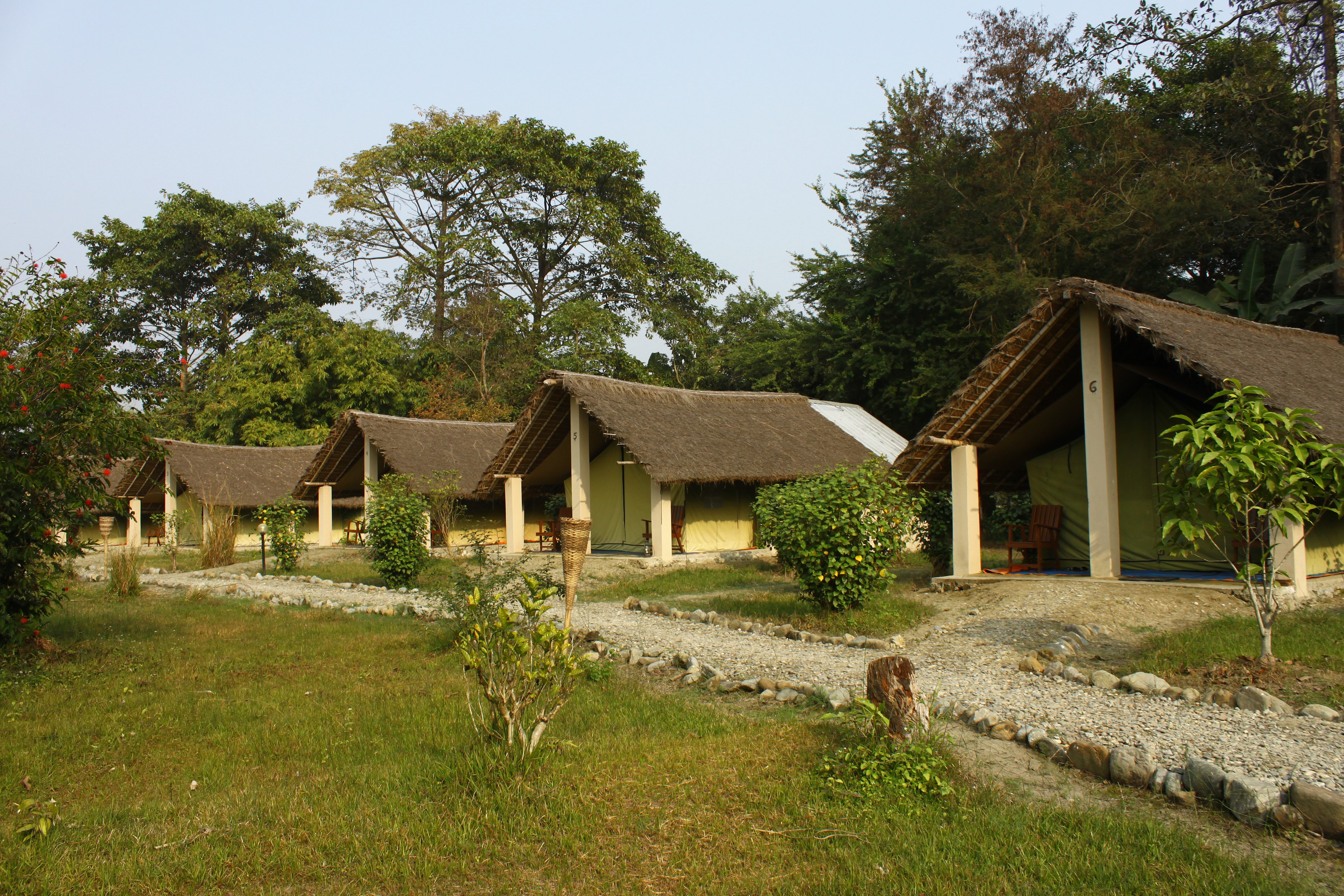
Tour Gallery
View a gallery of images for this tour below, click on an image to view as full size with caption
